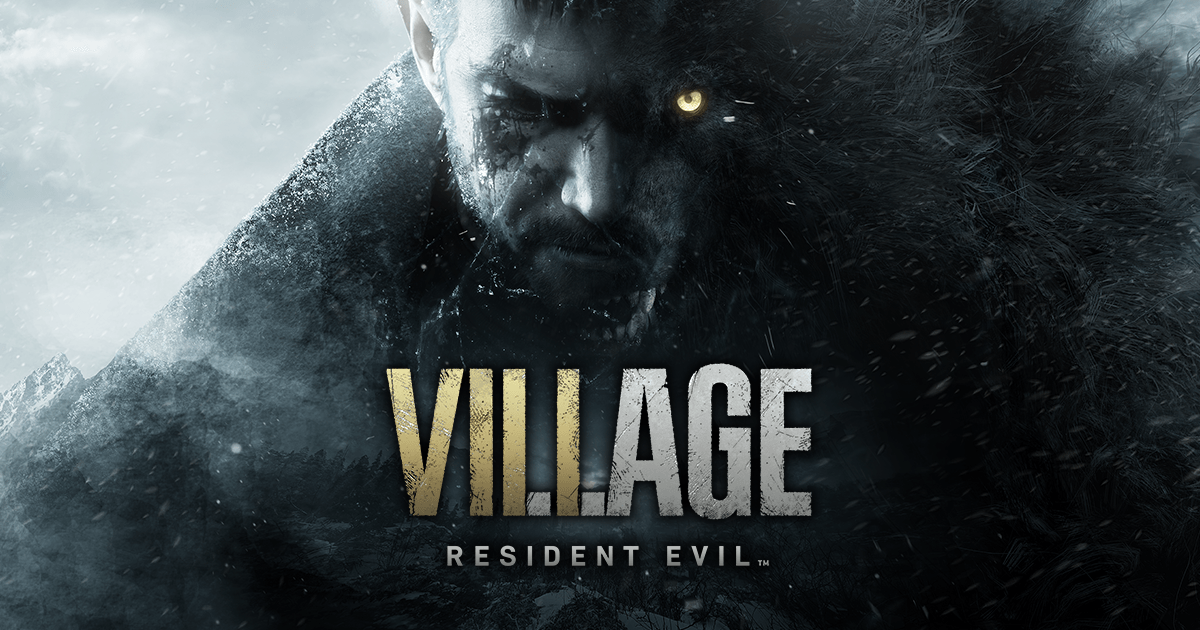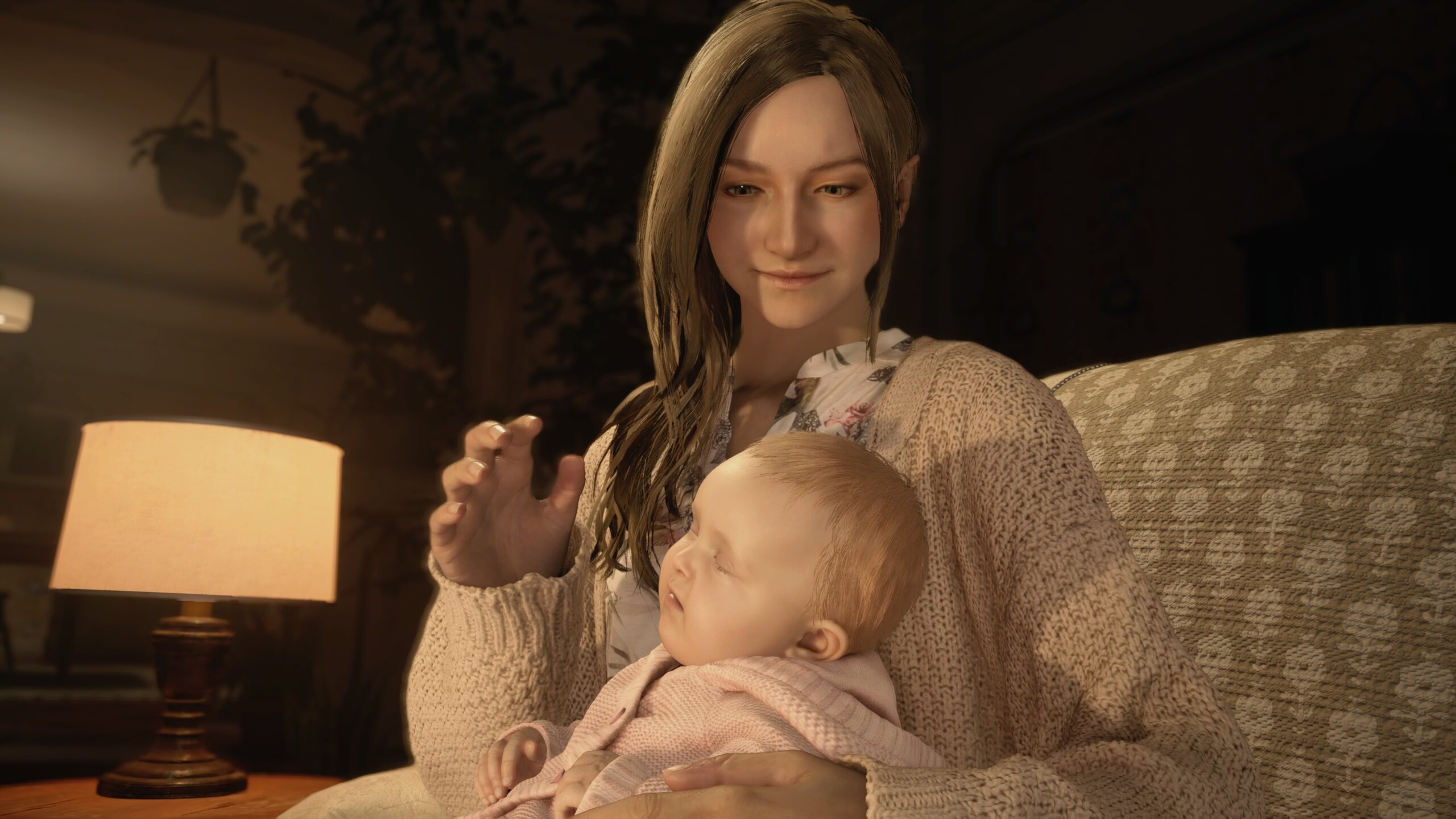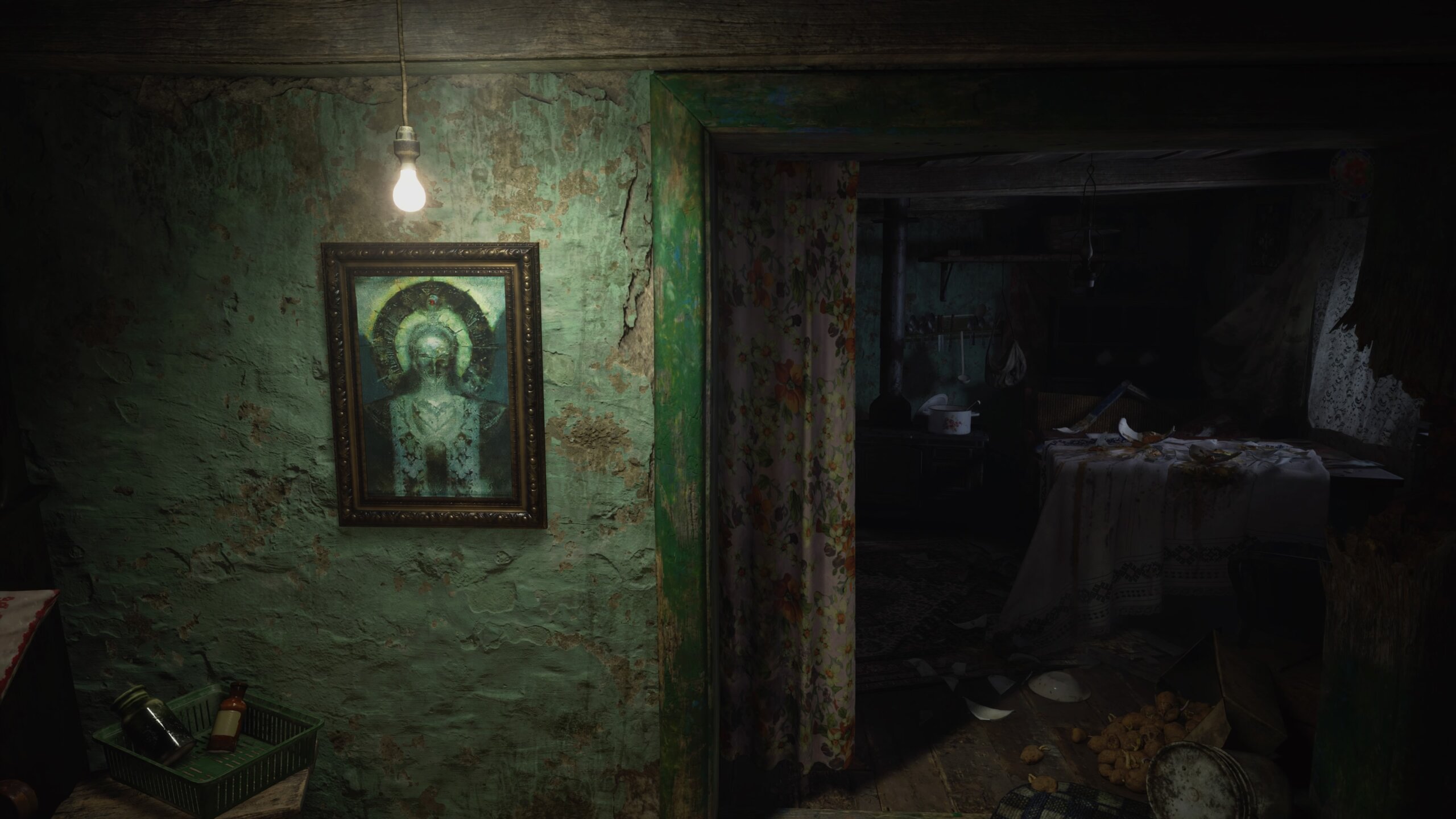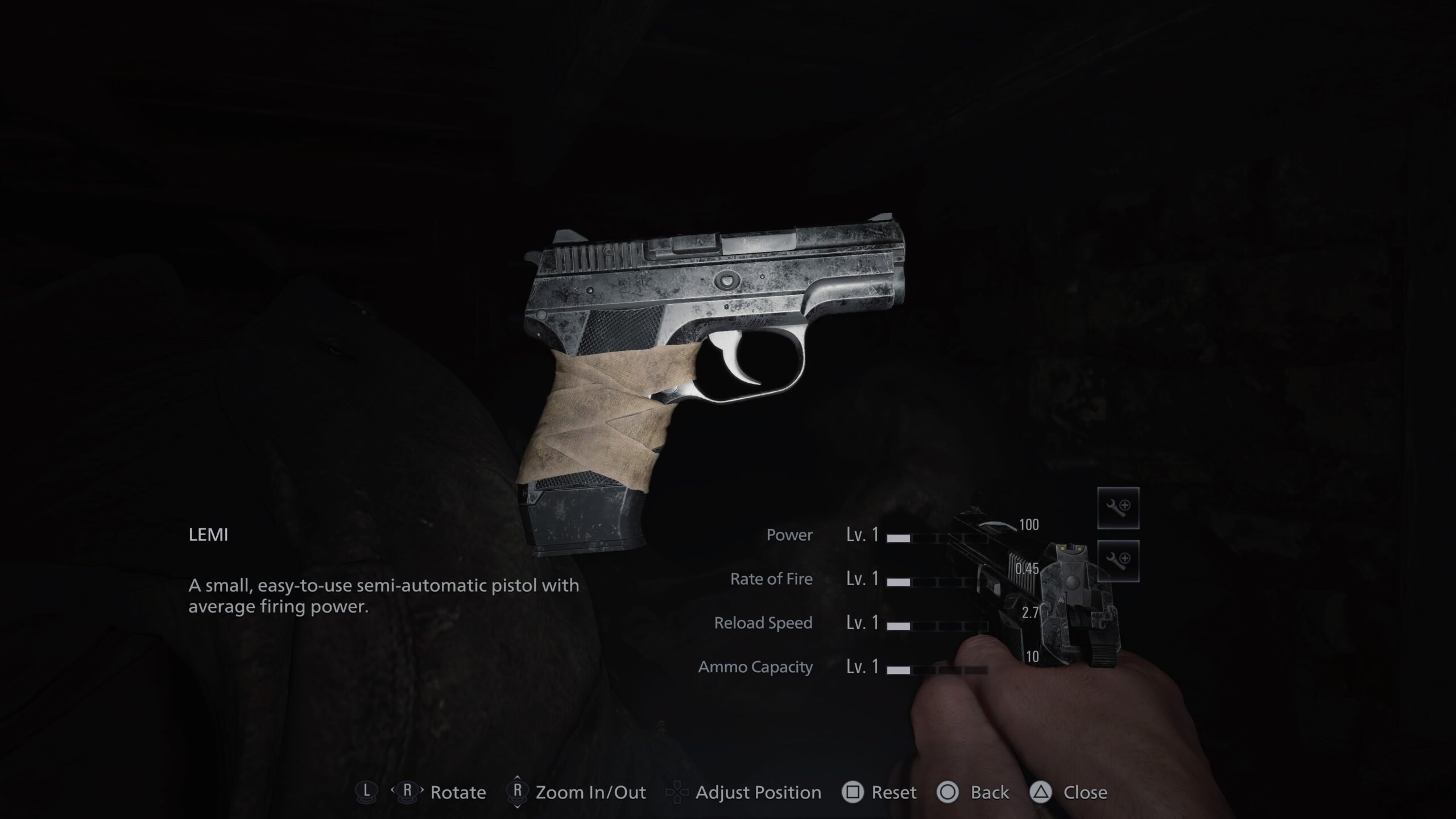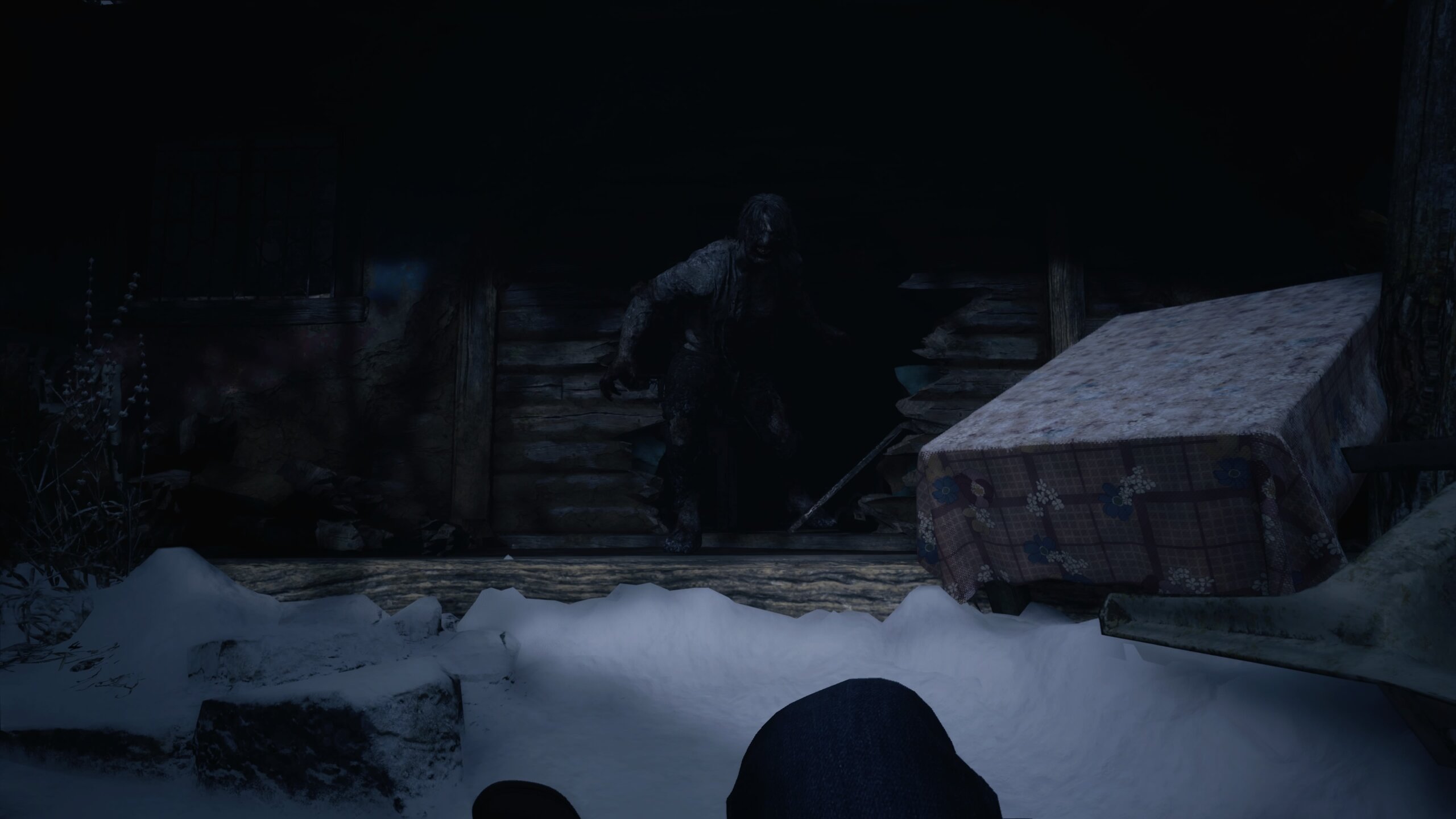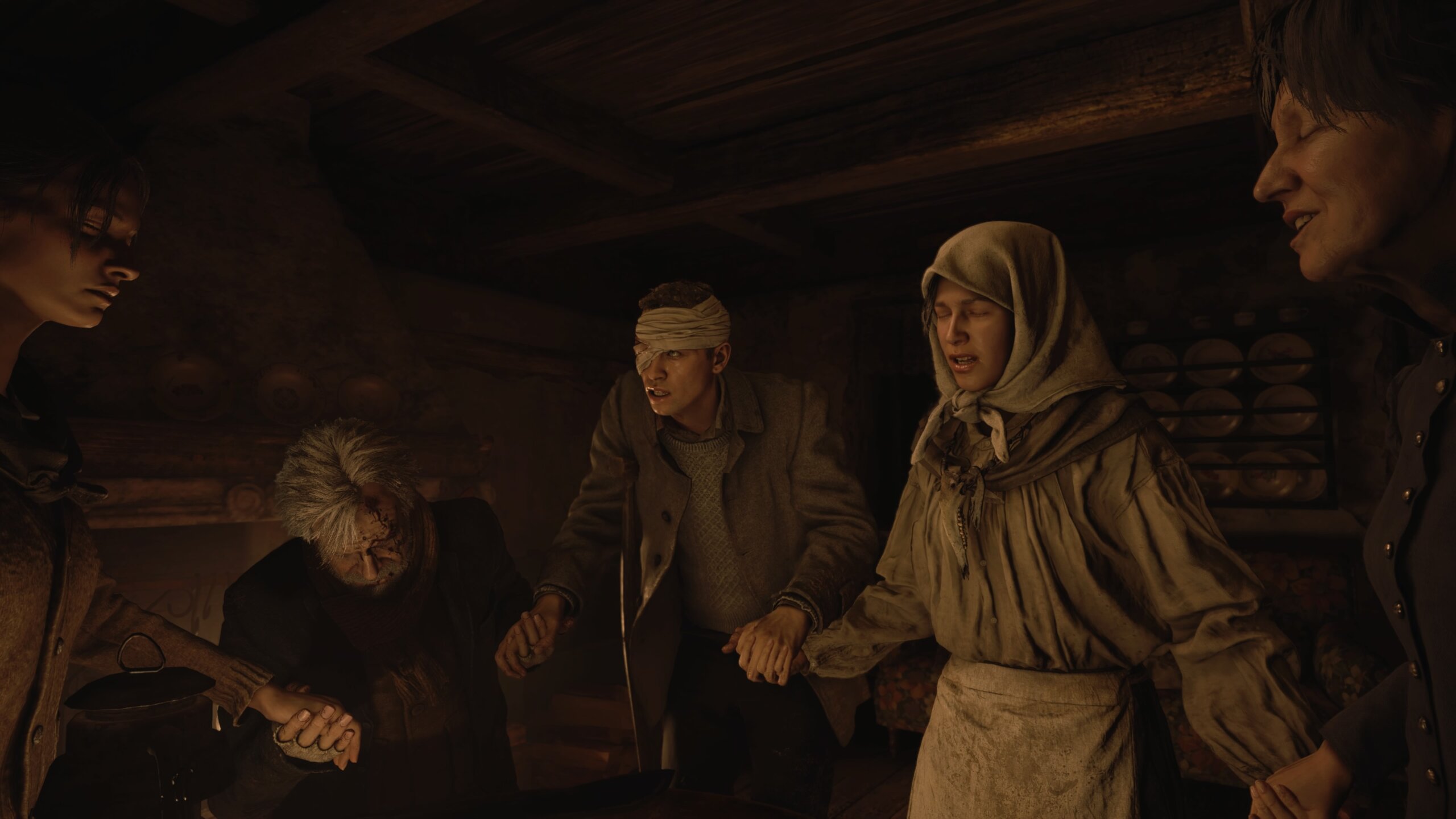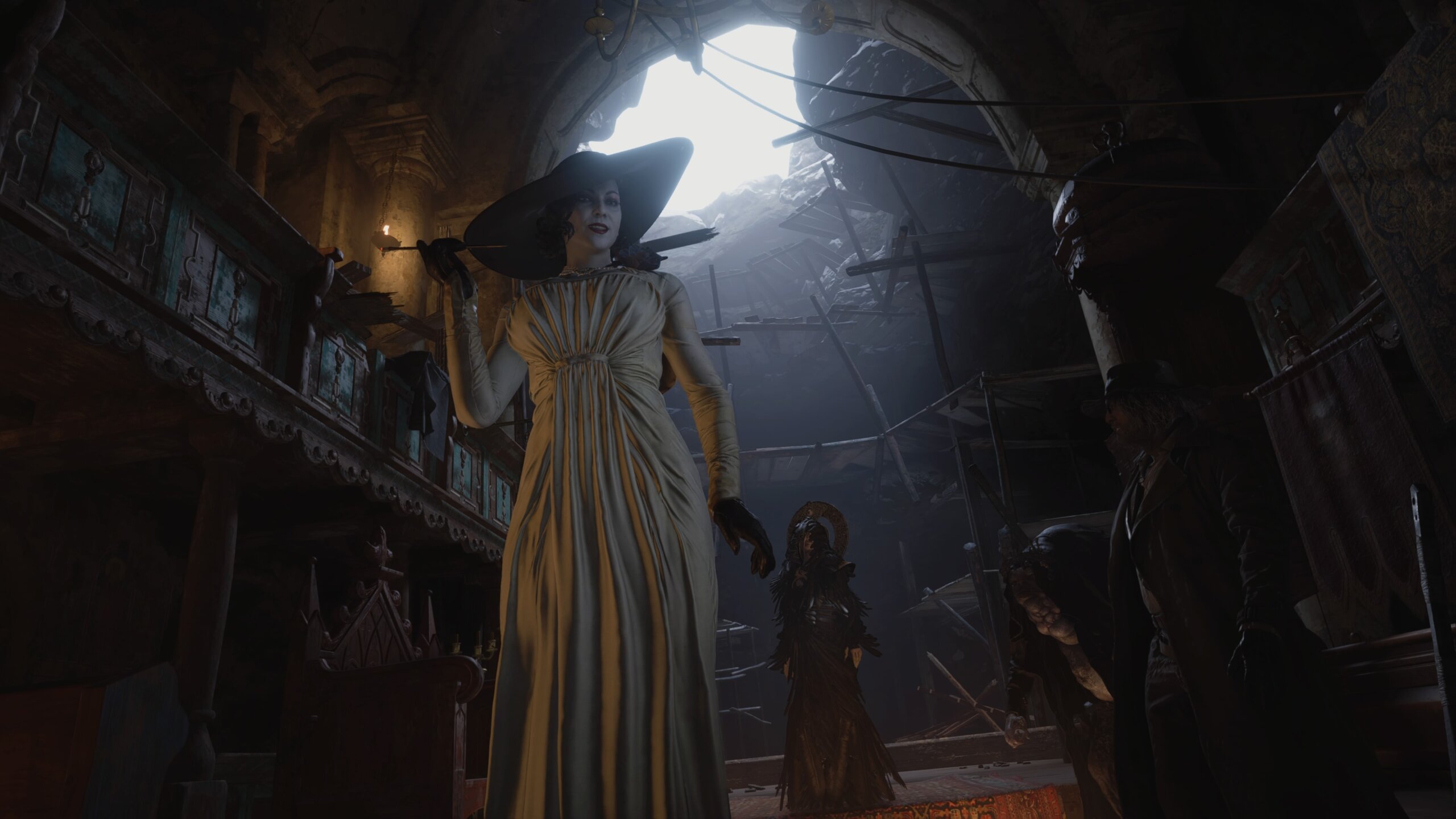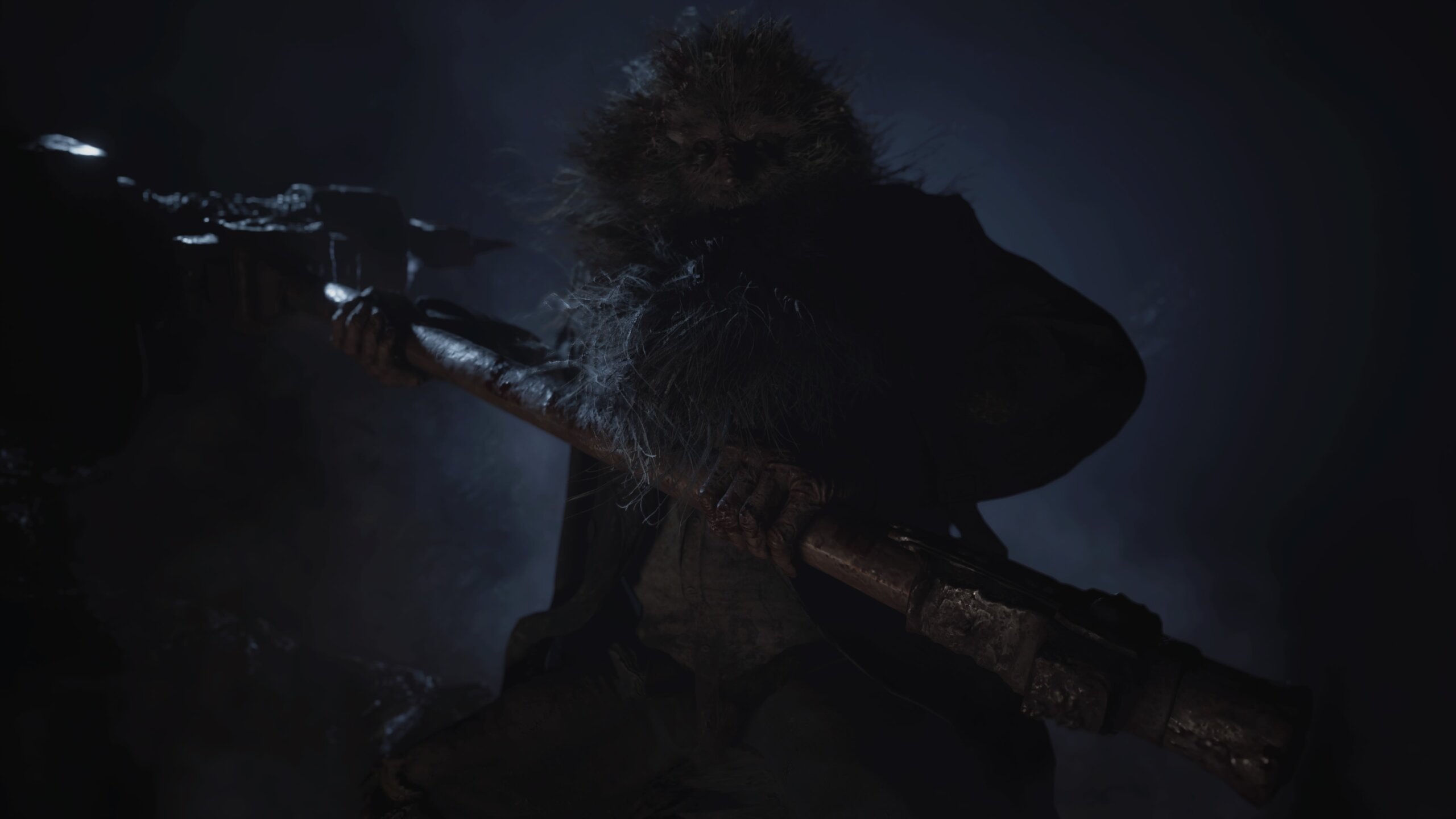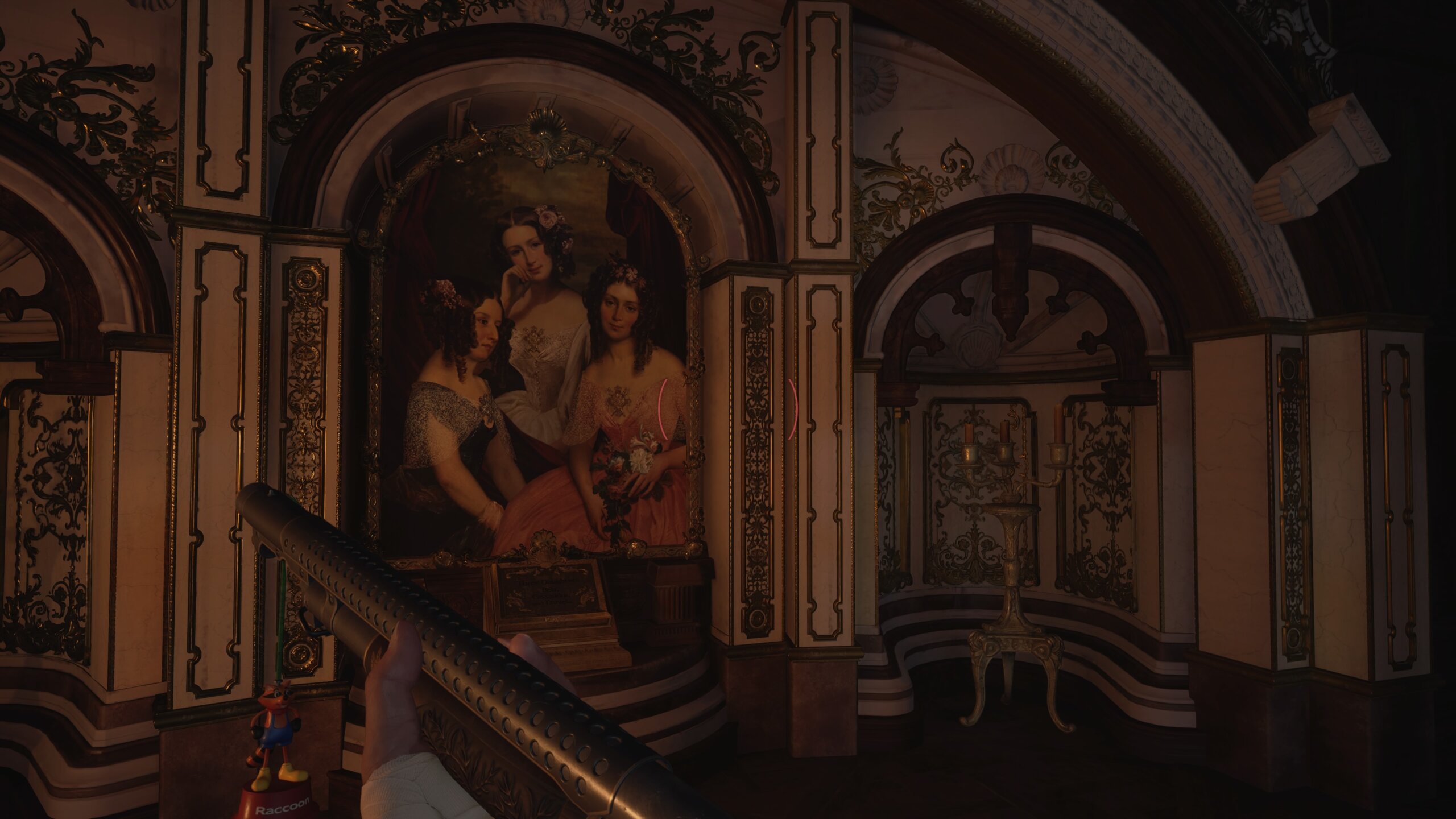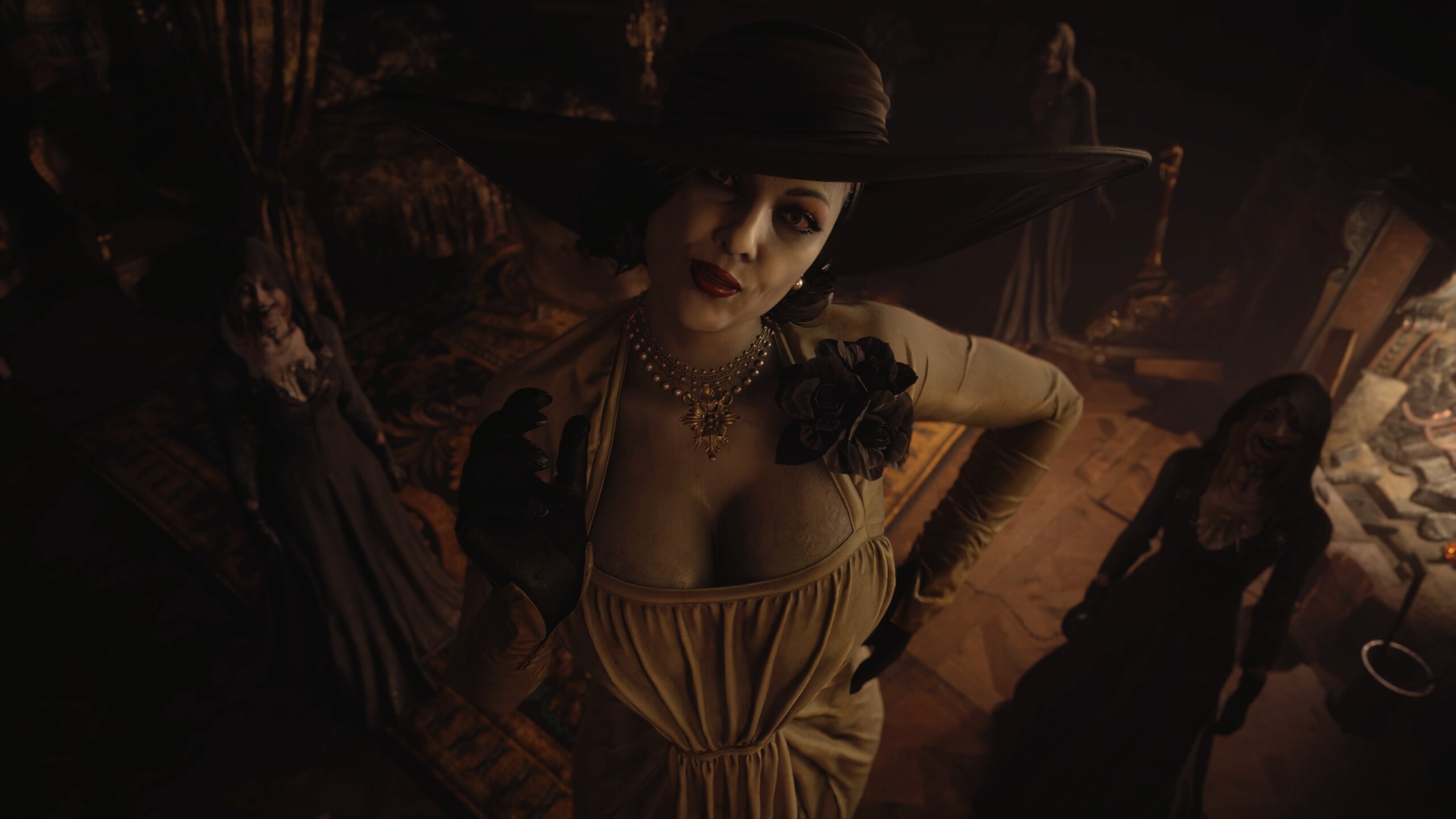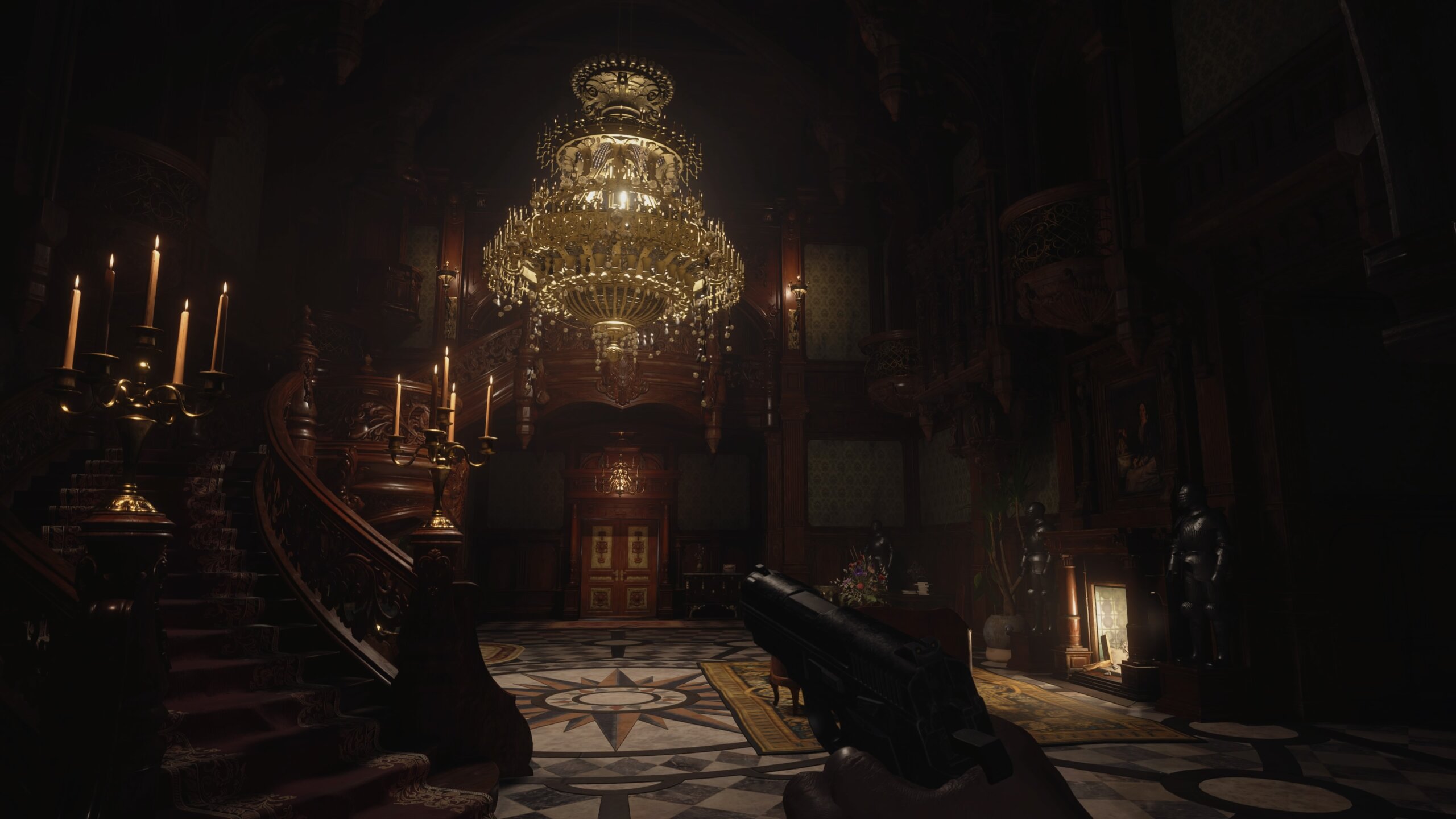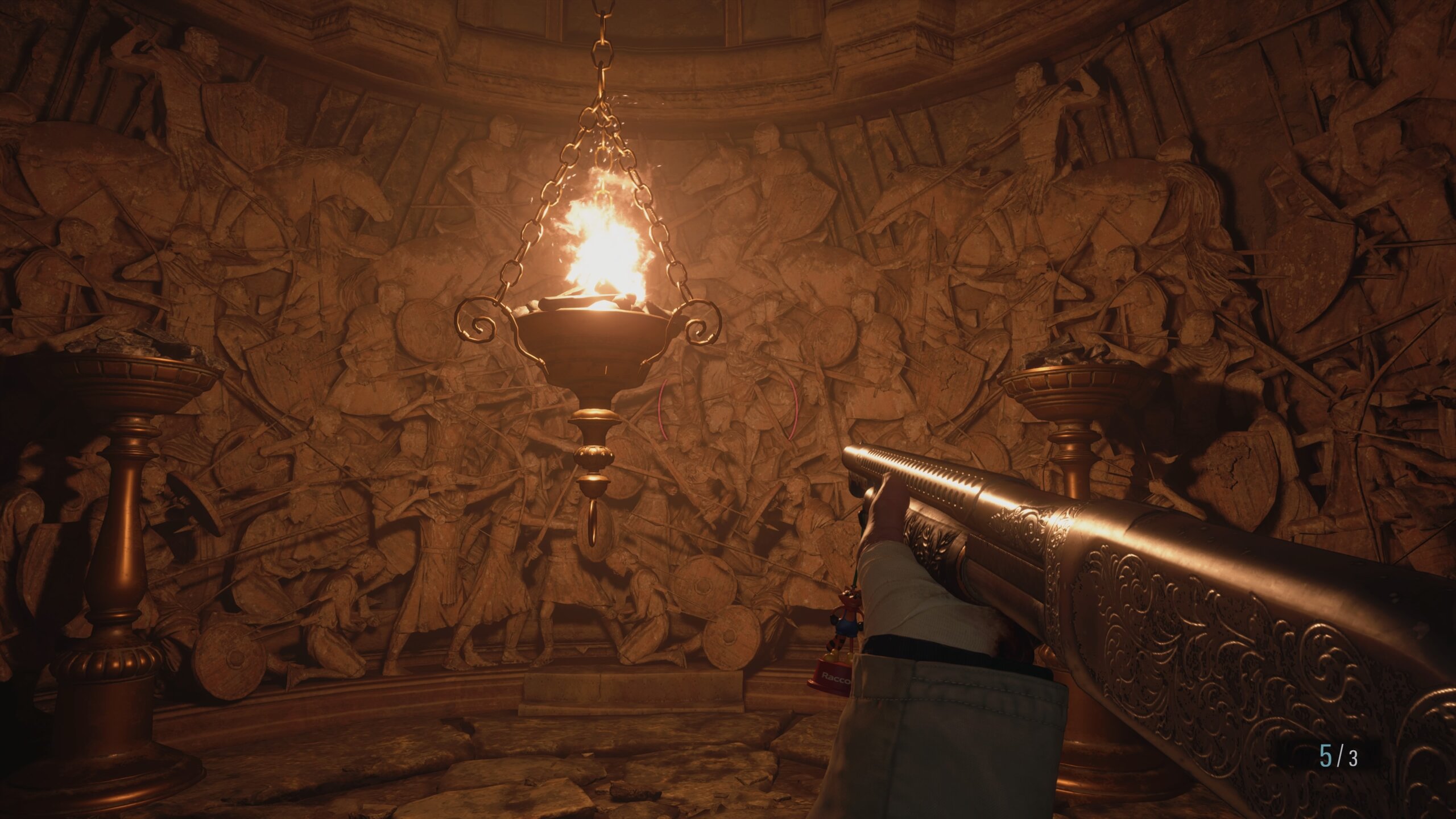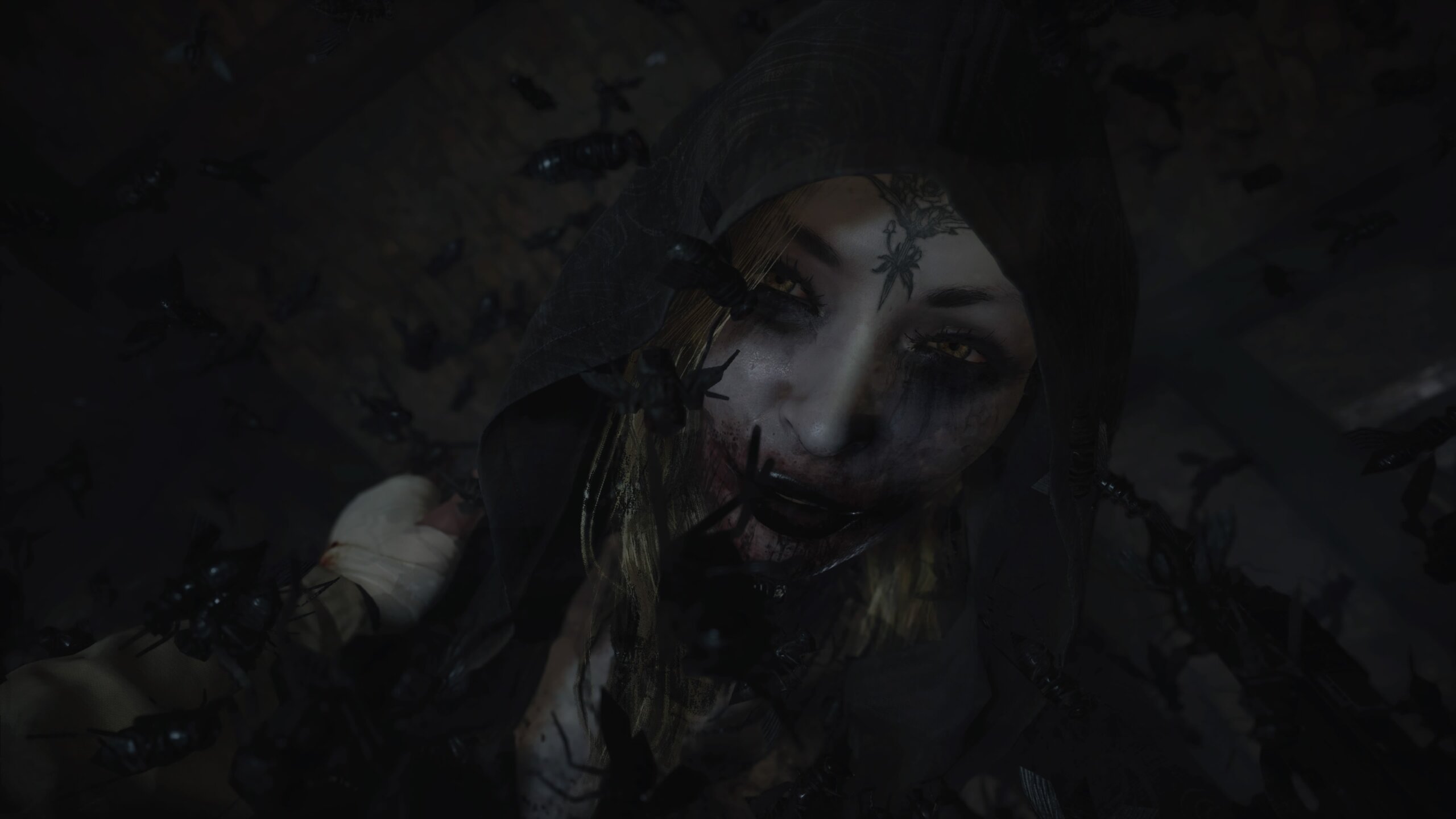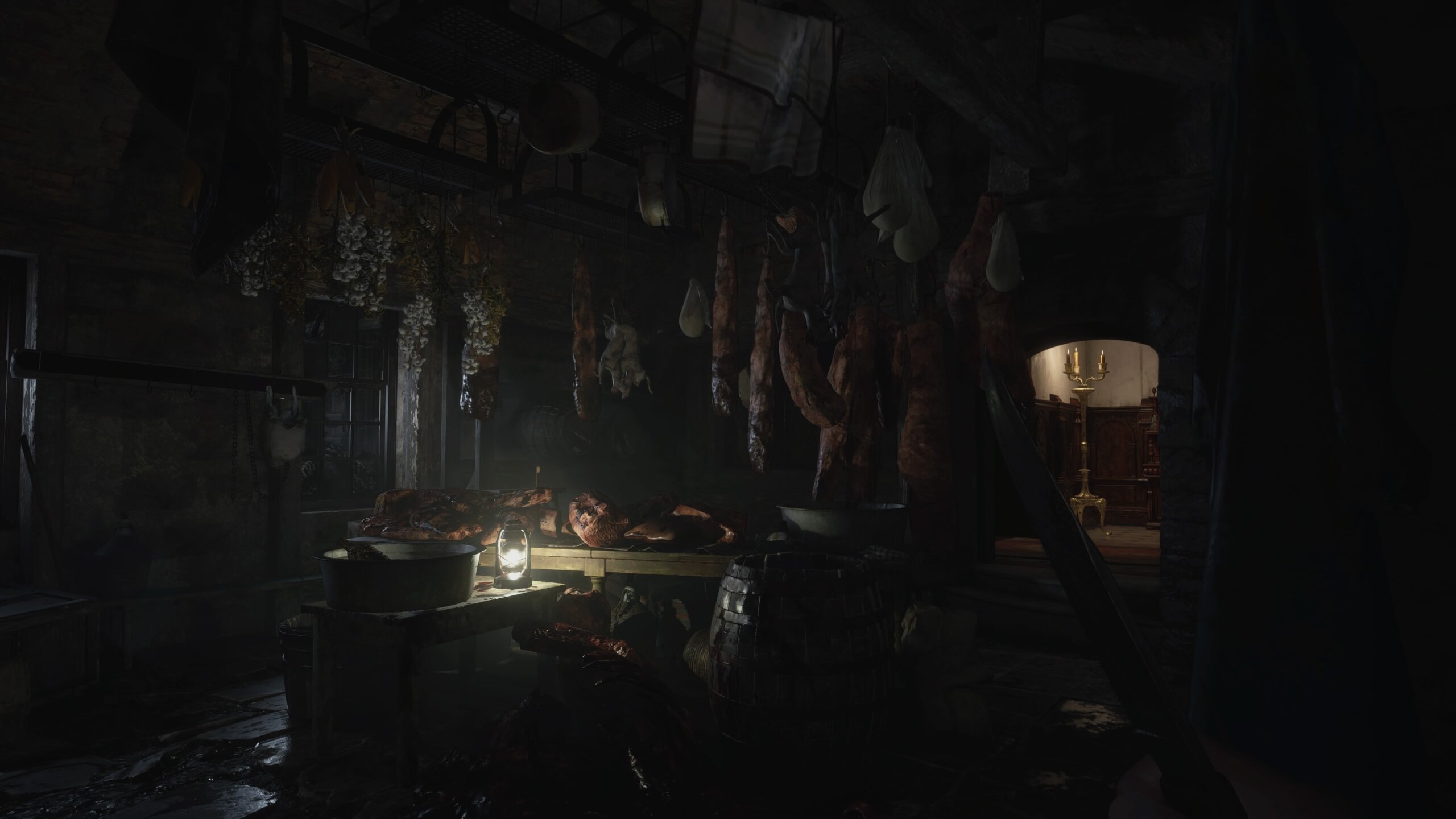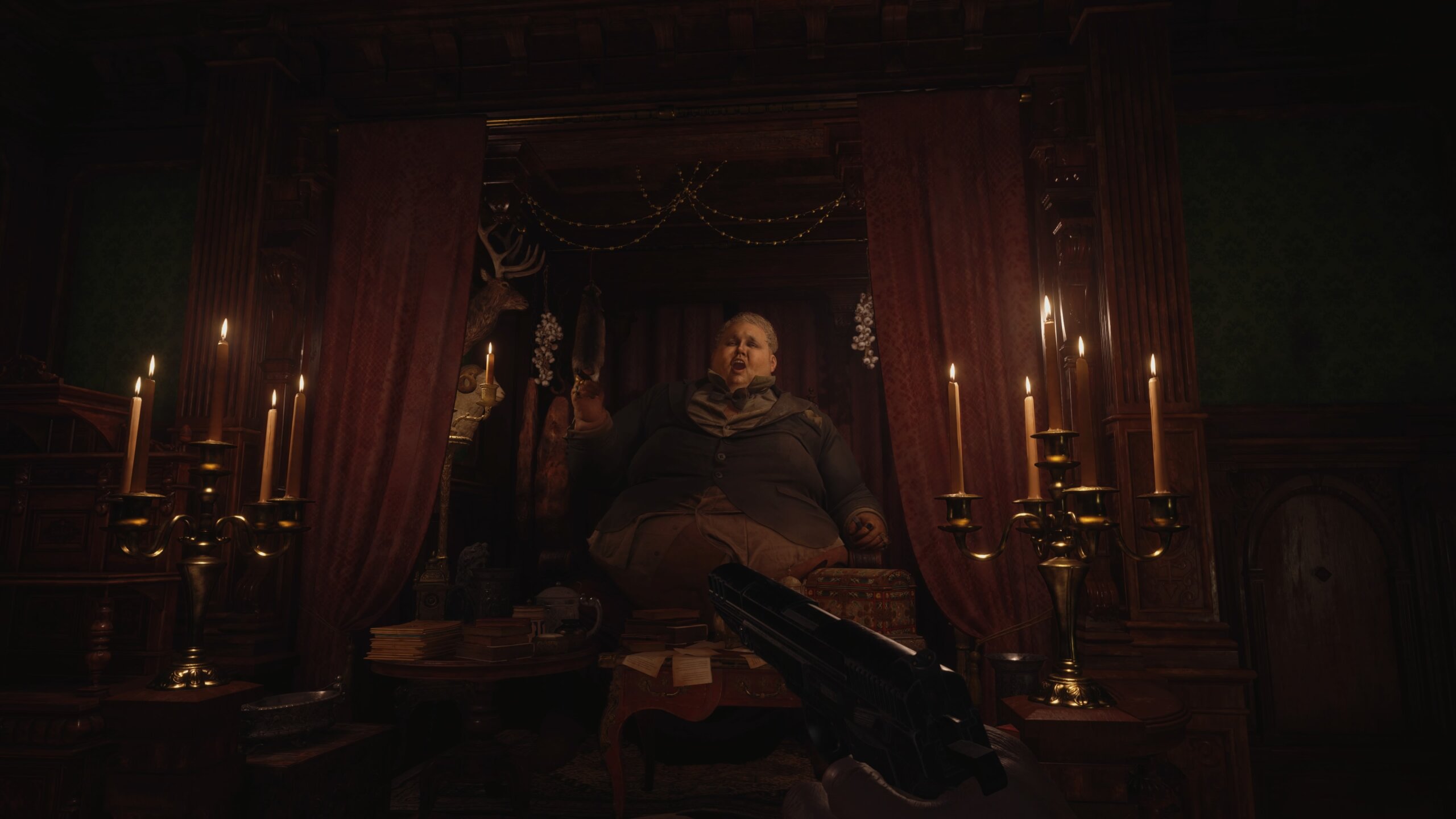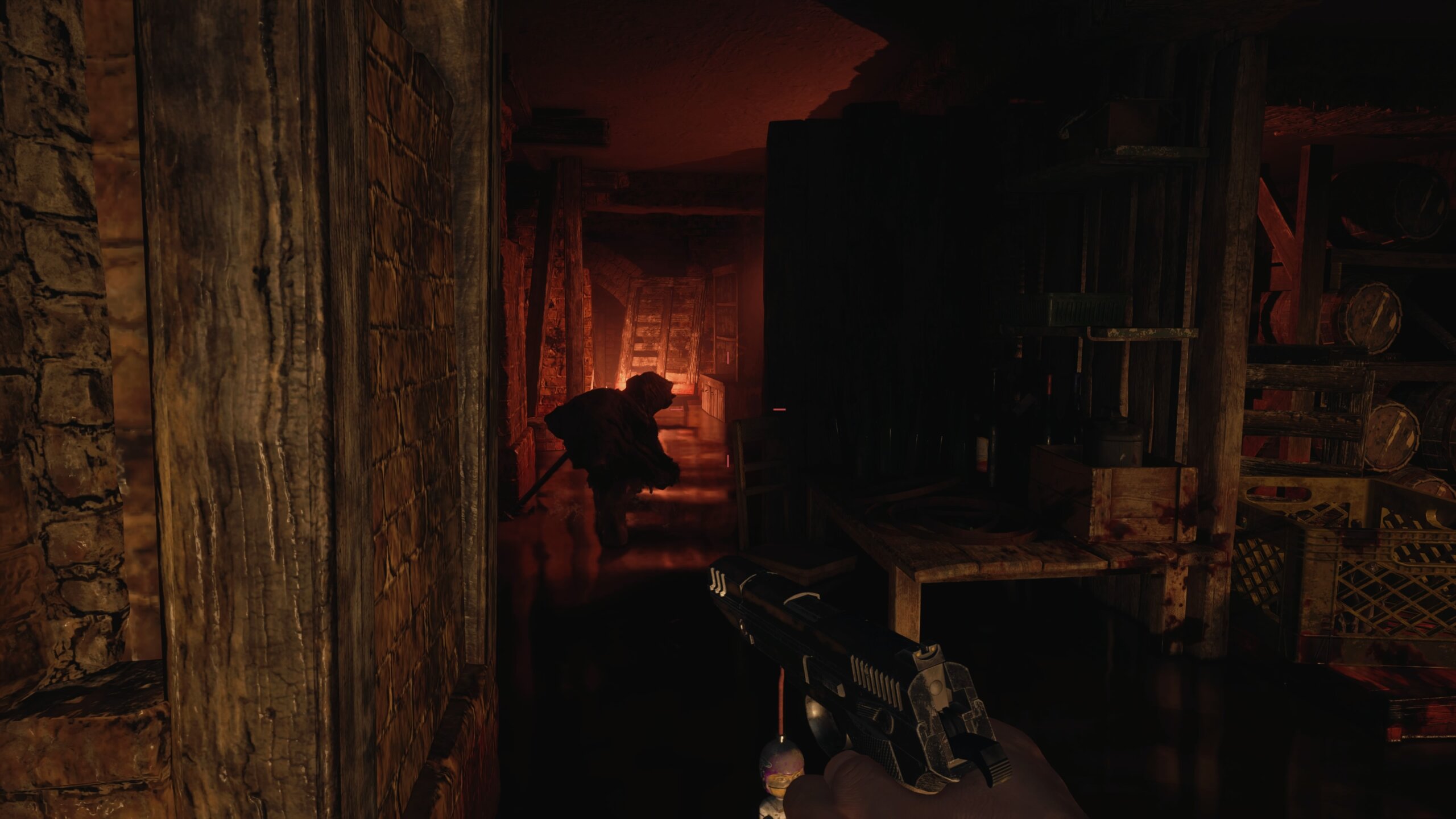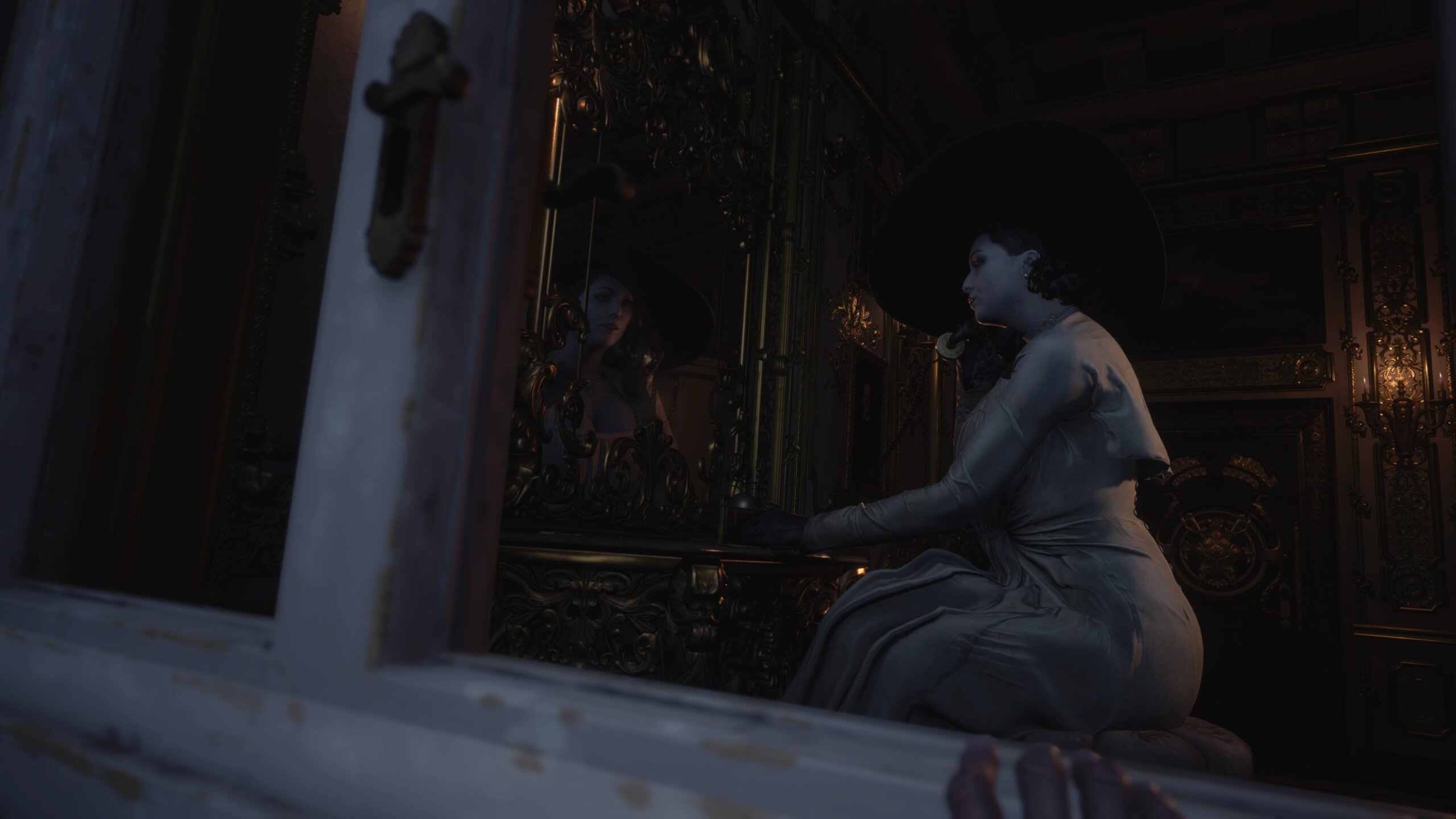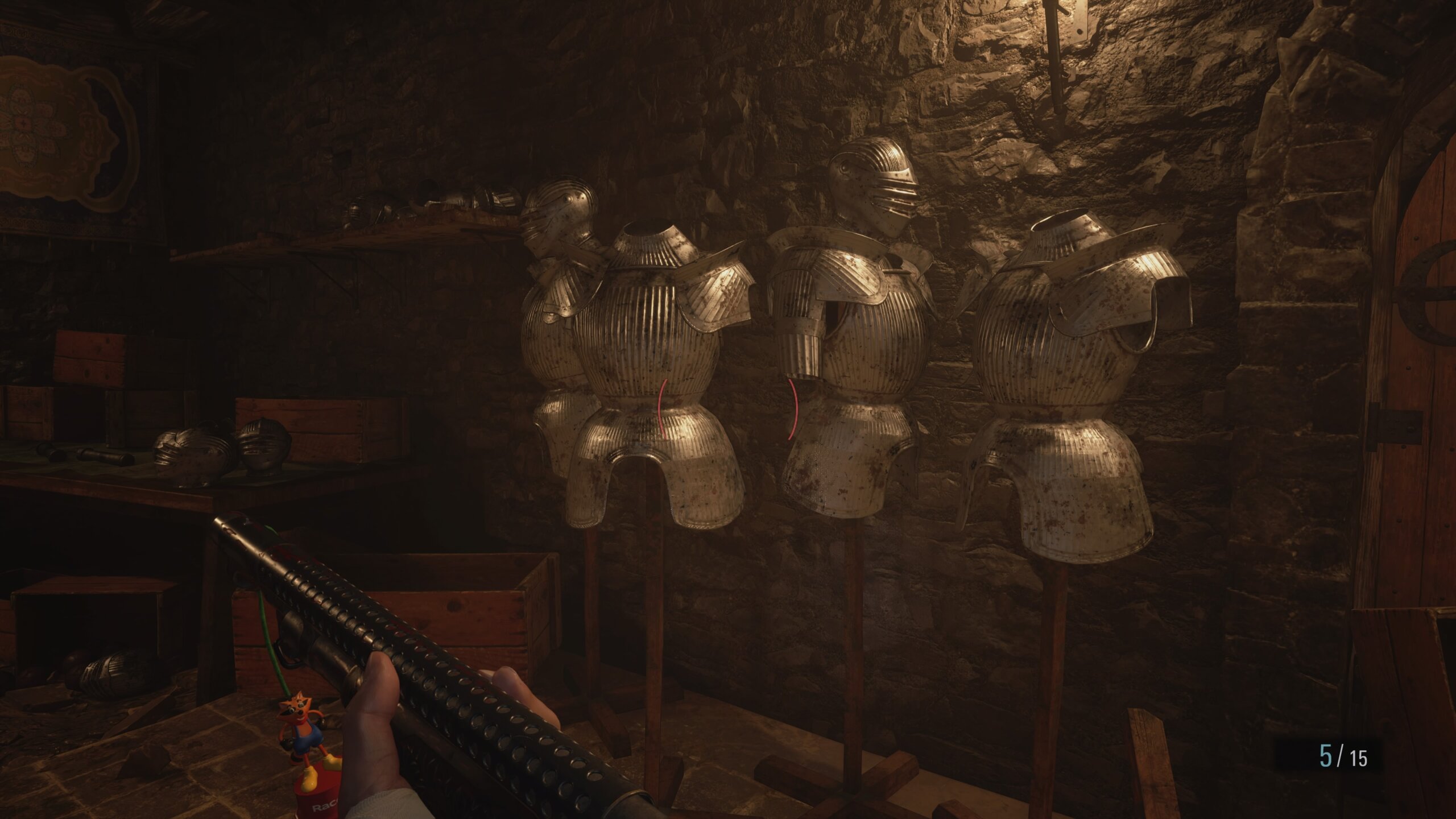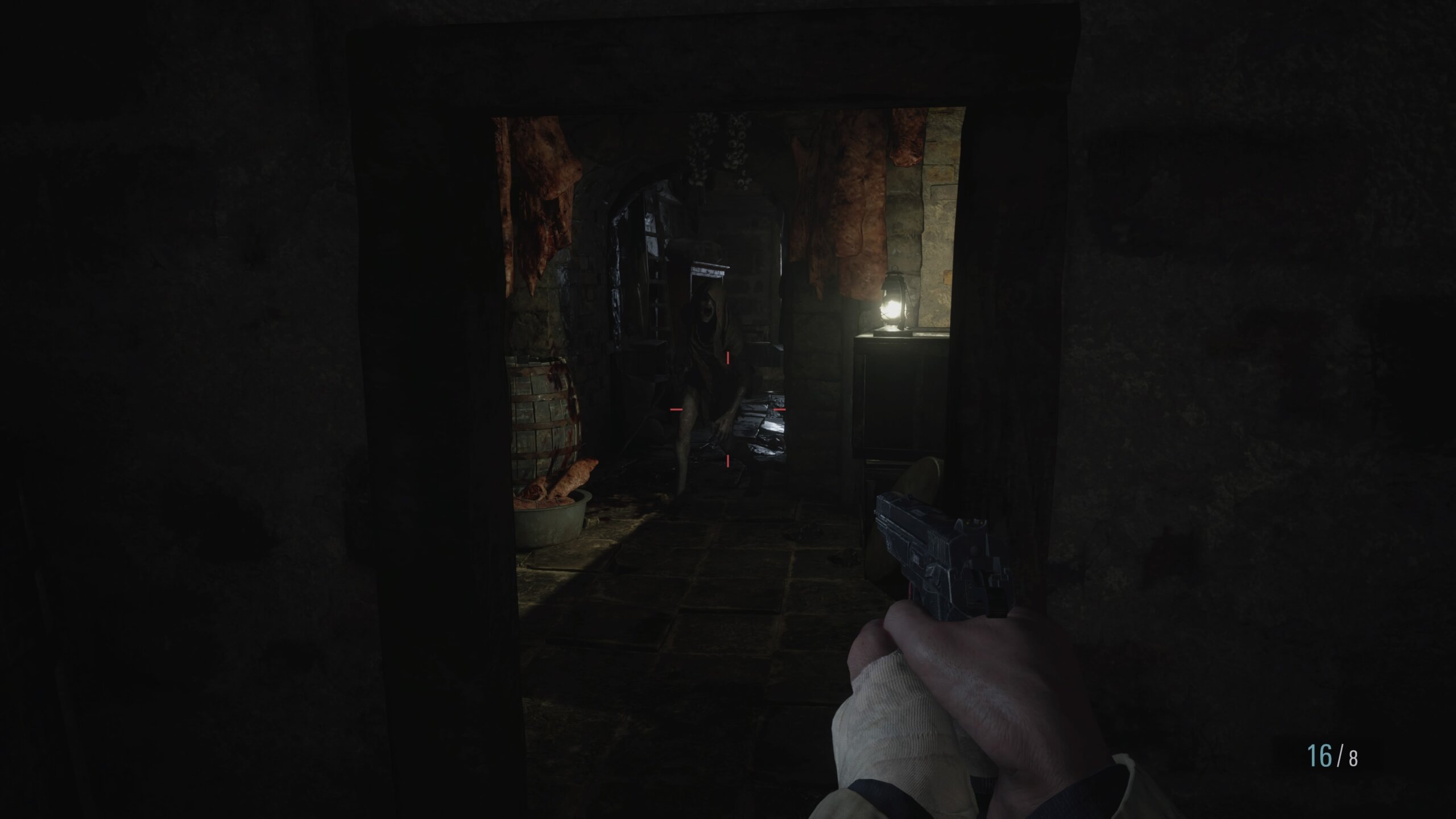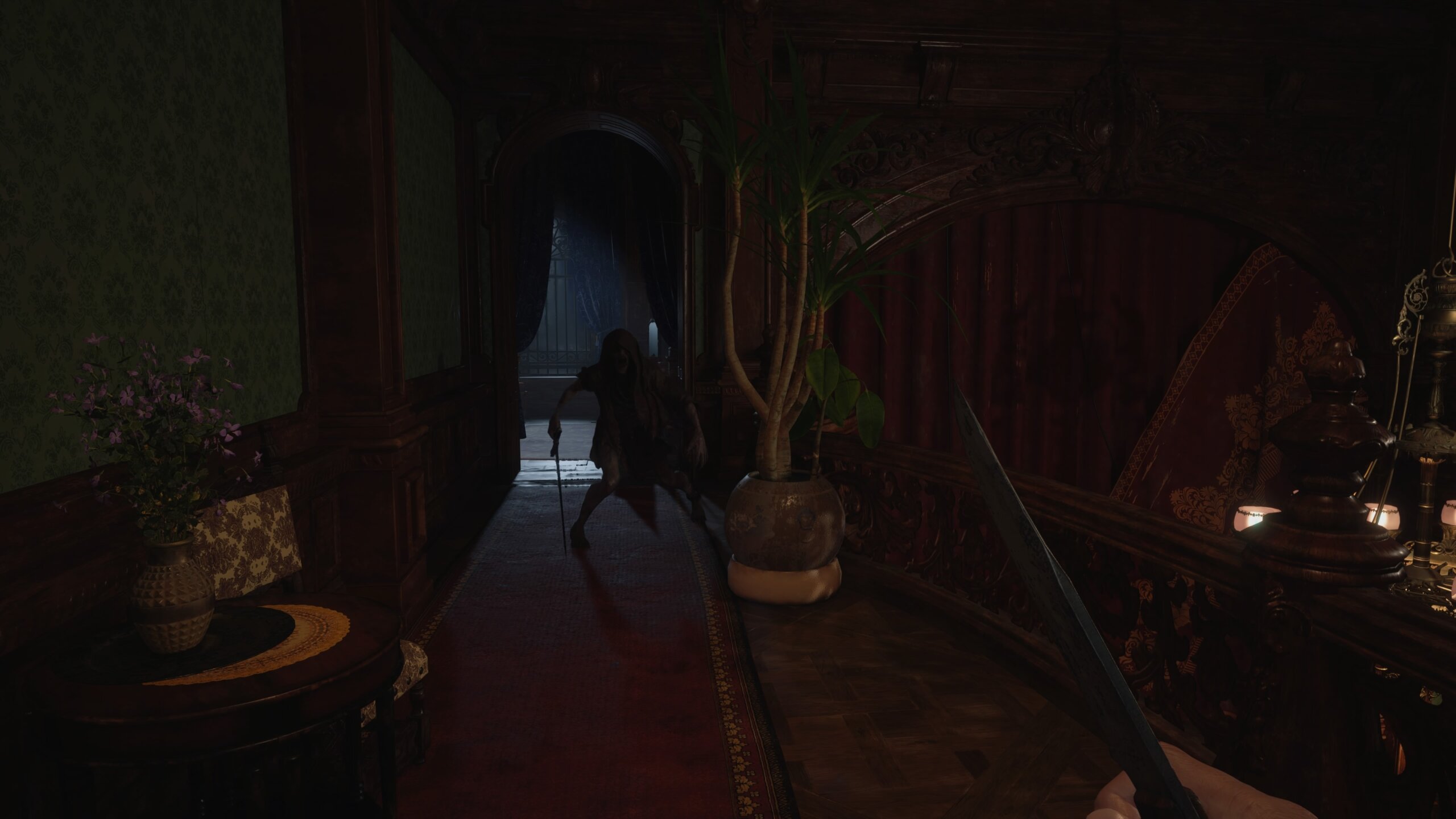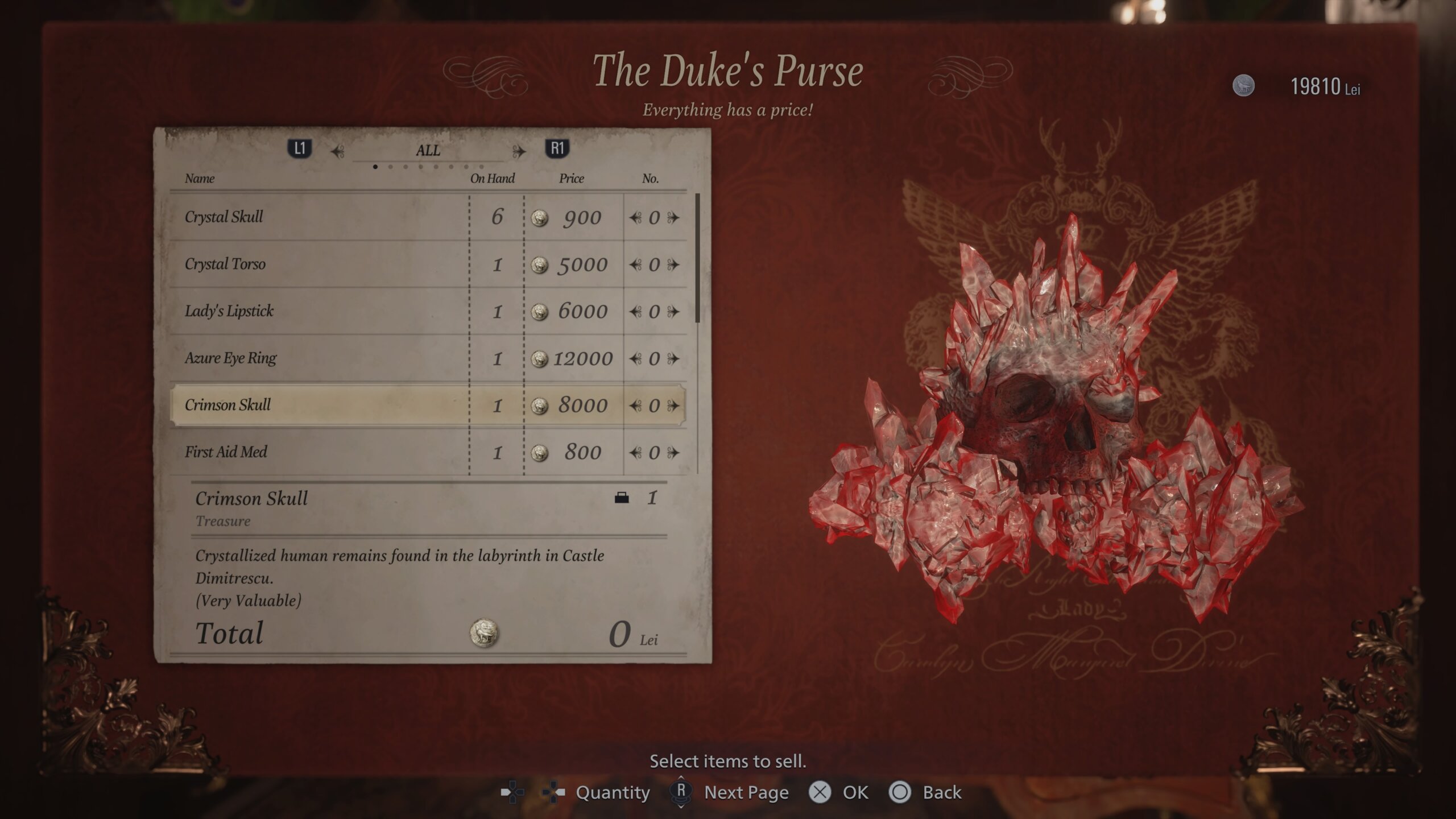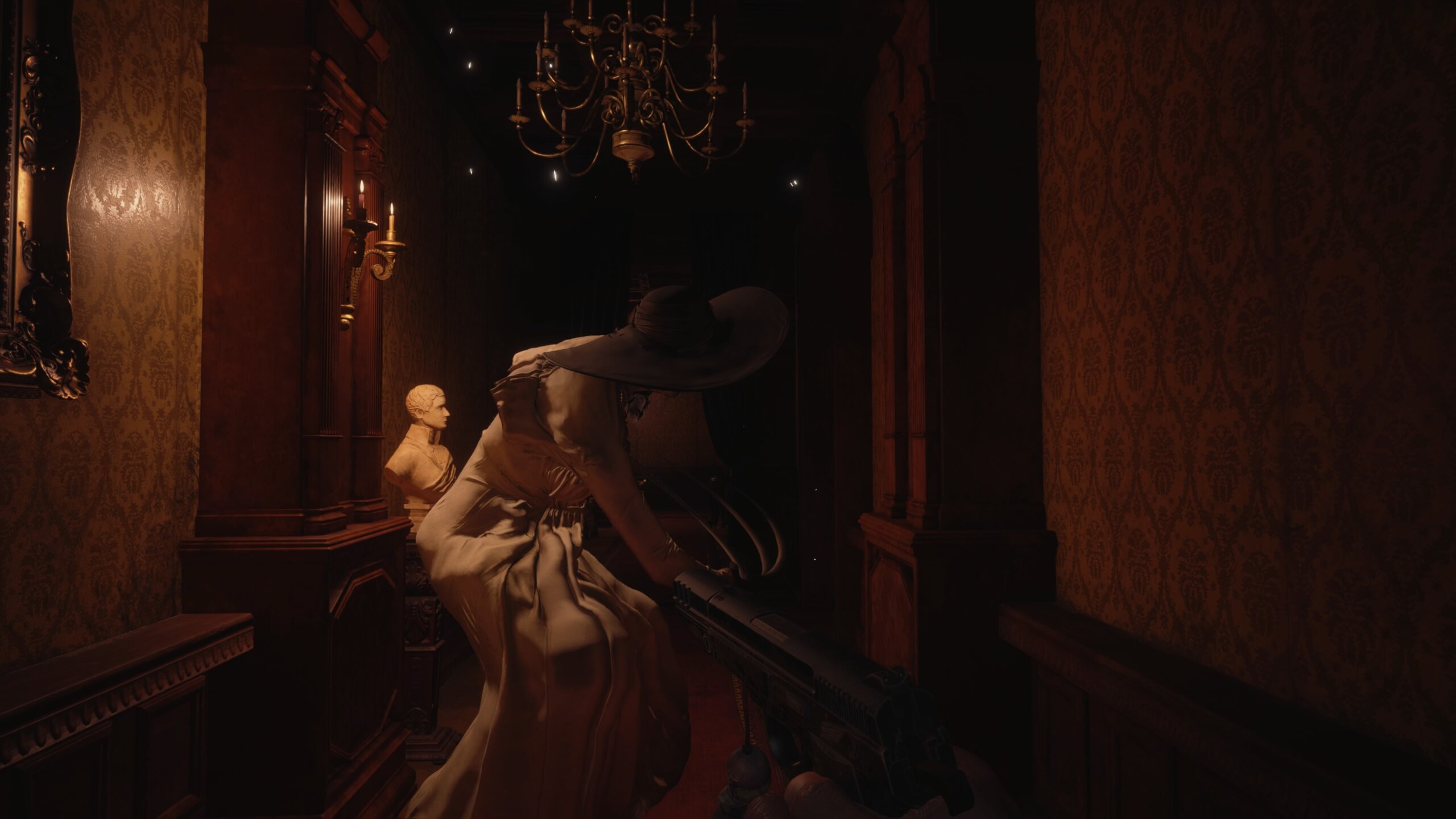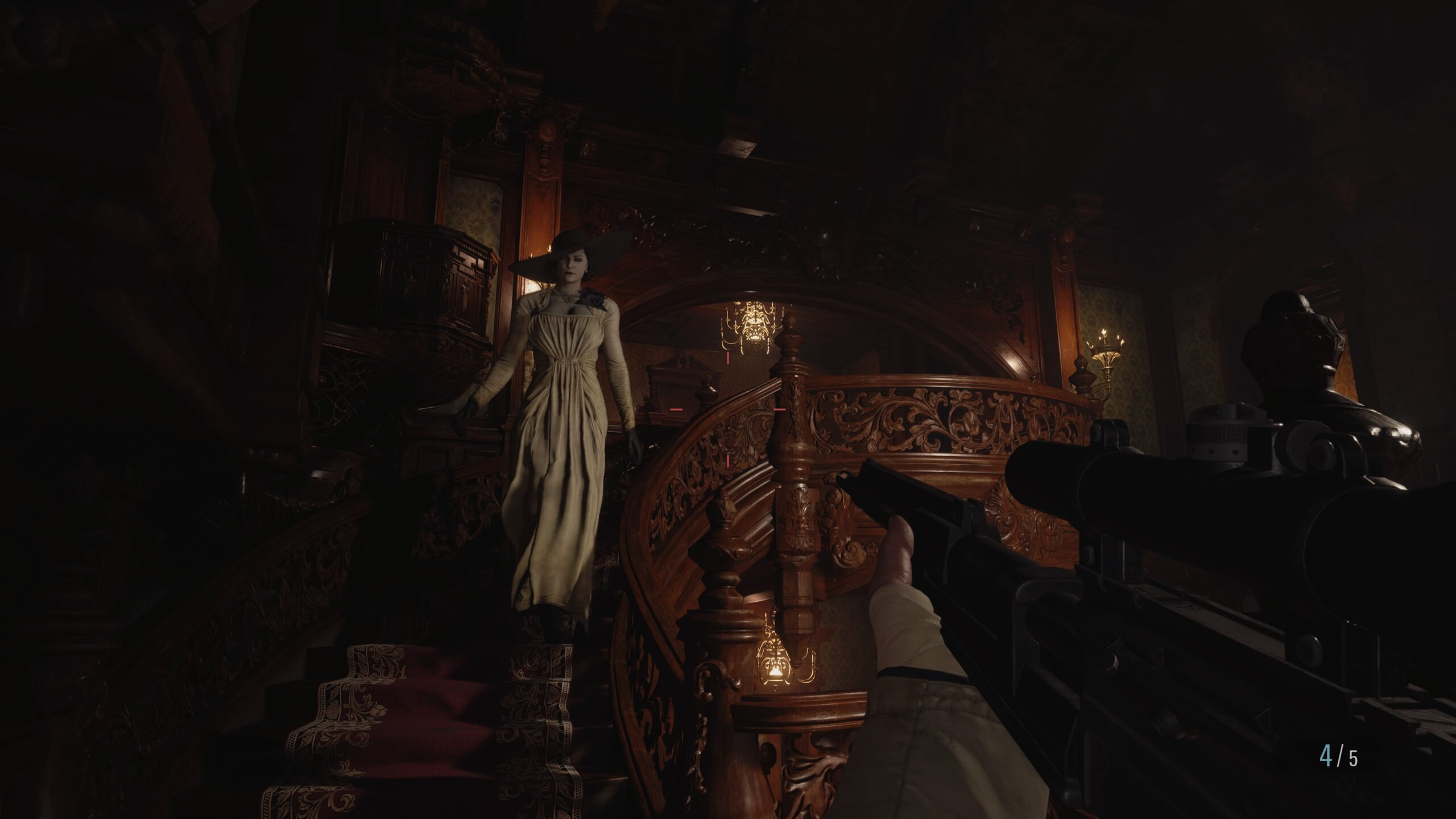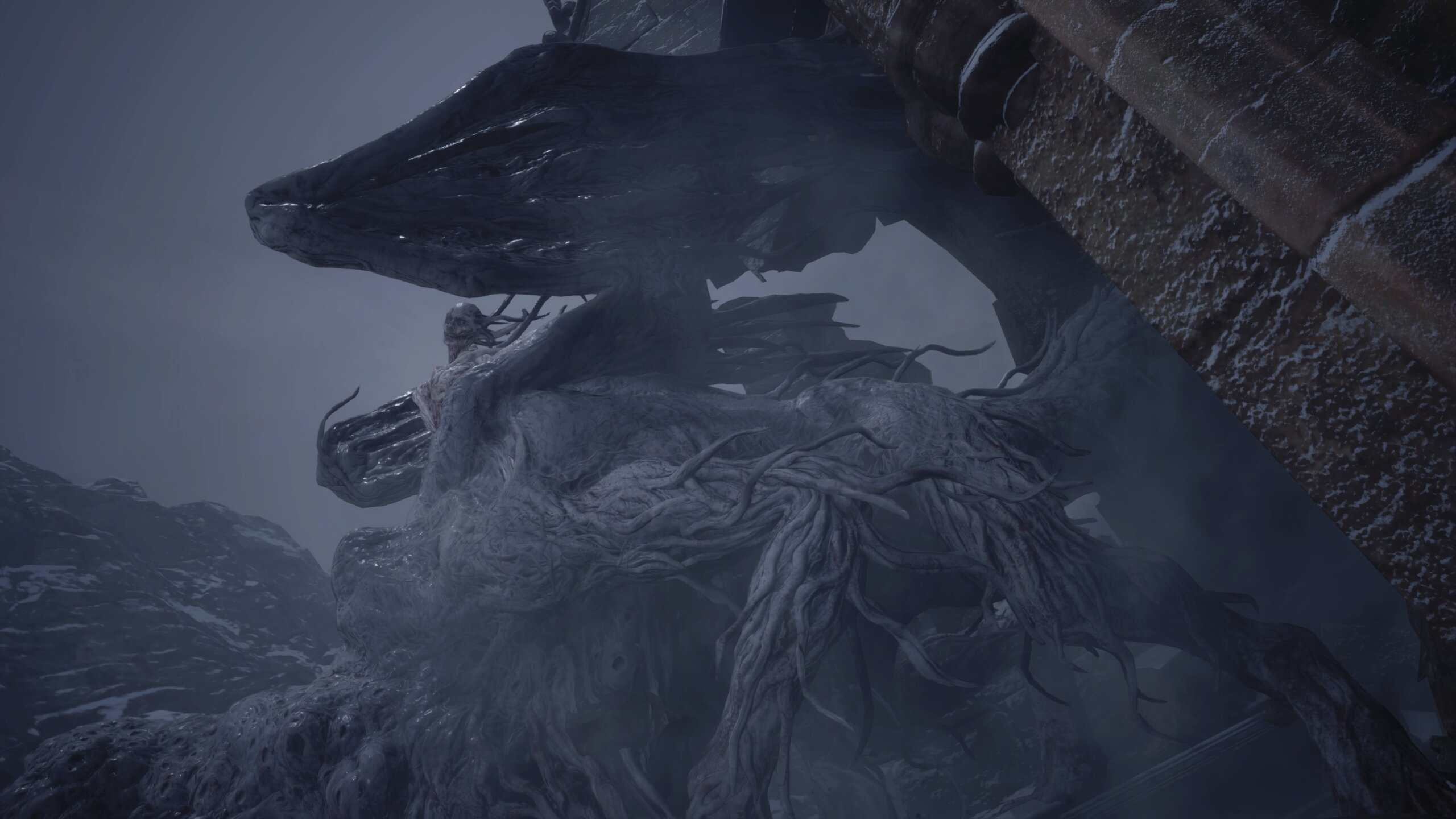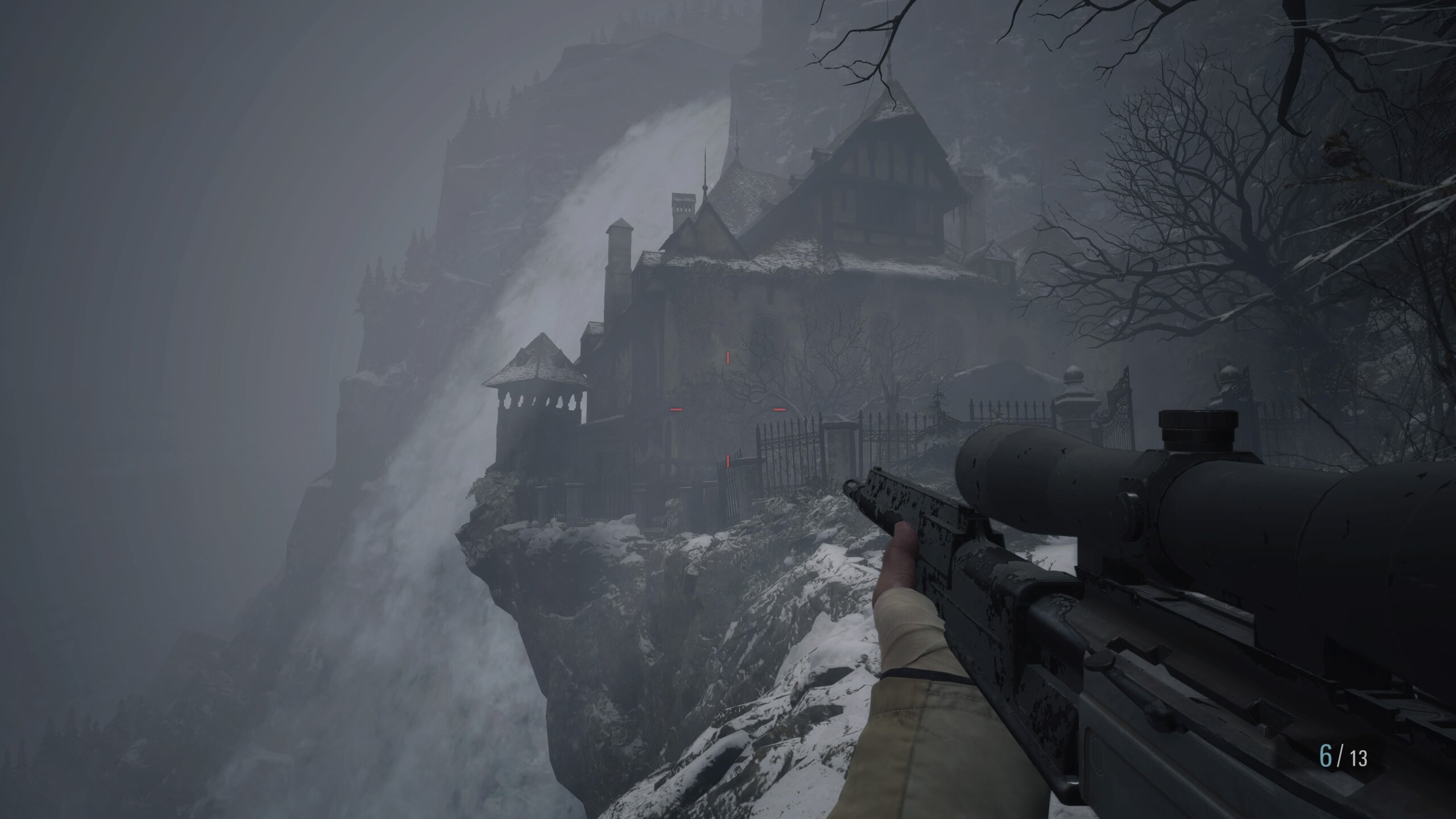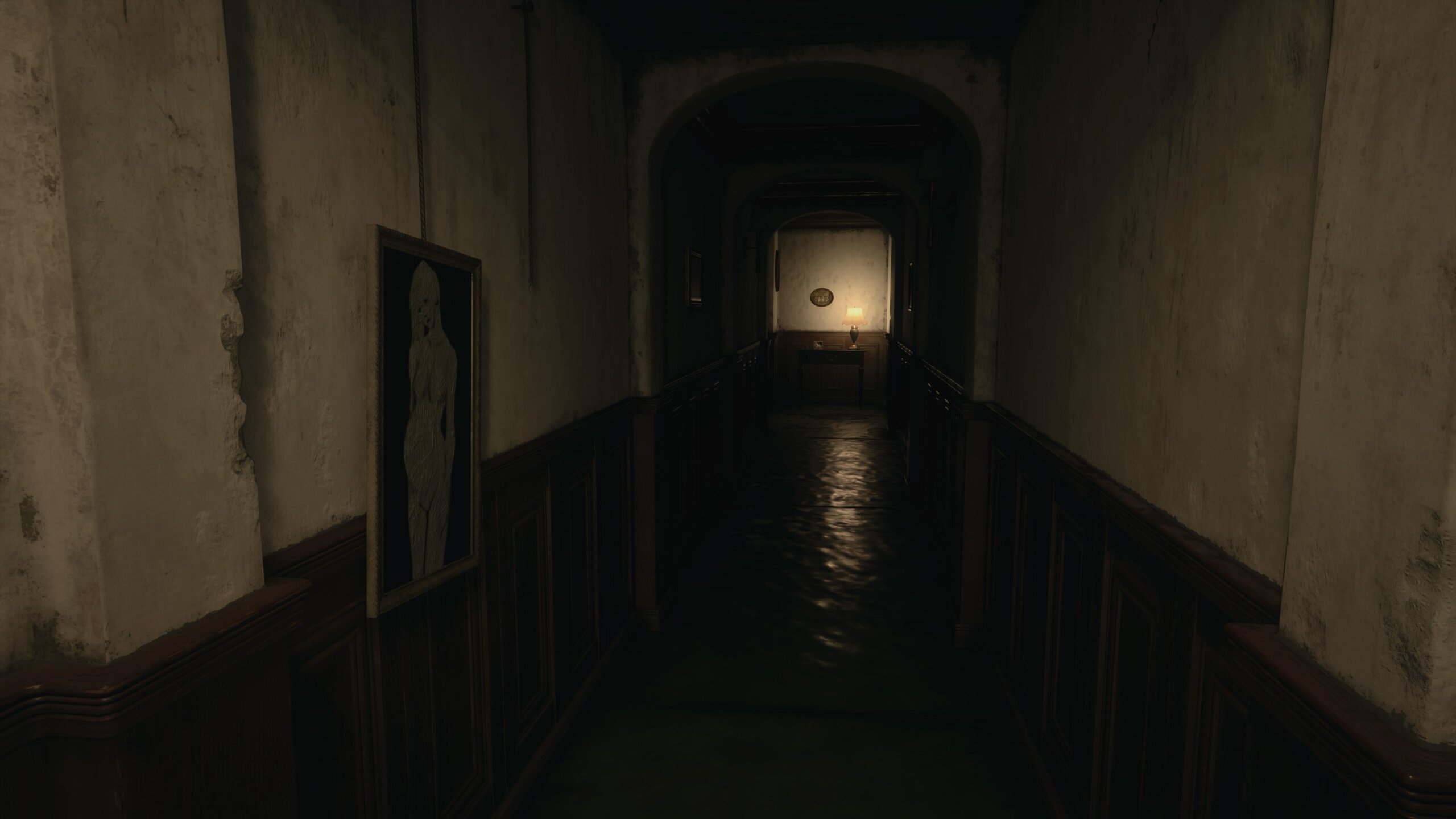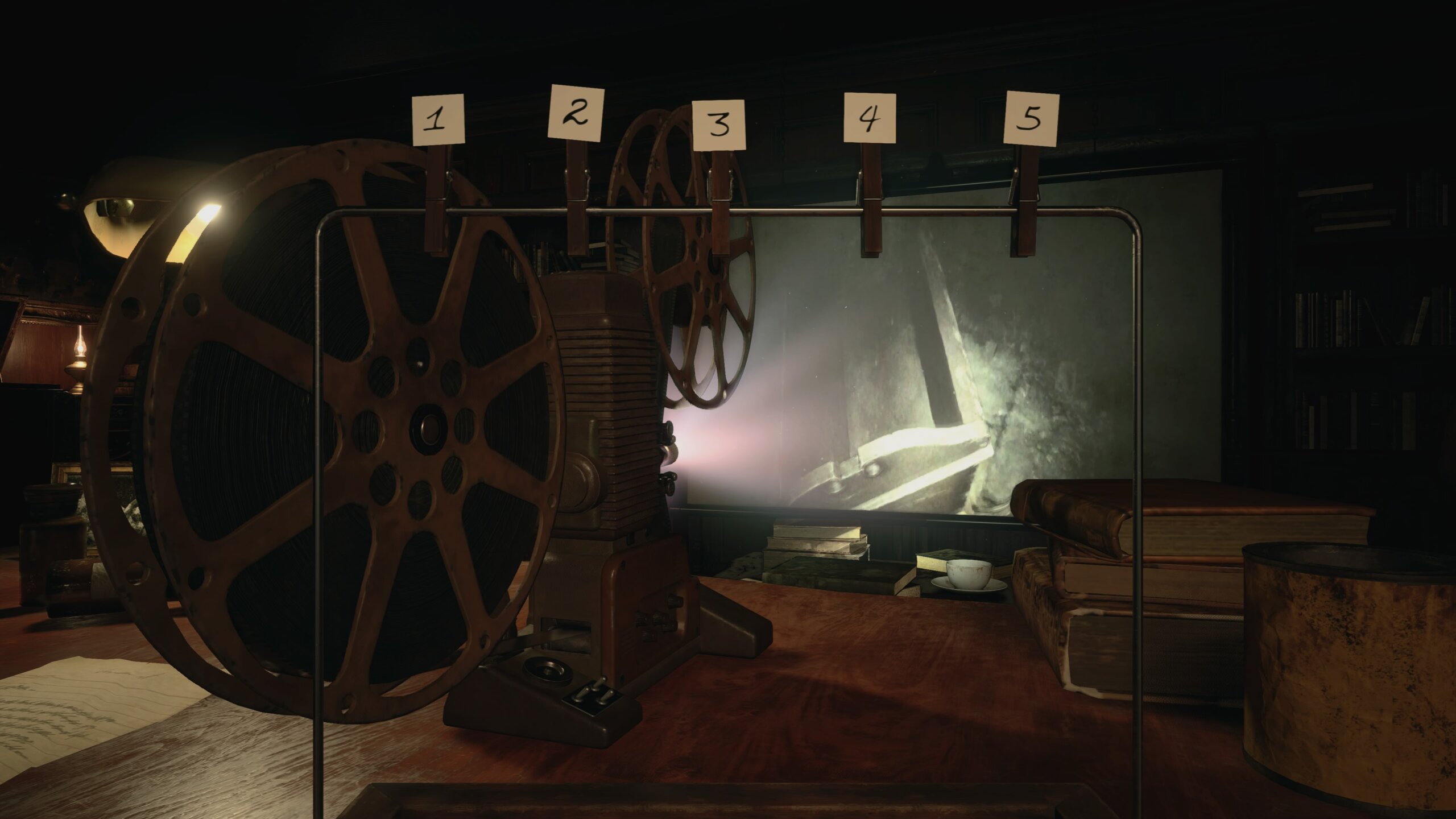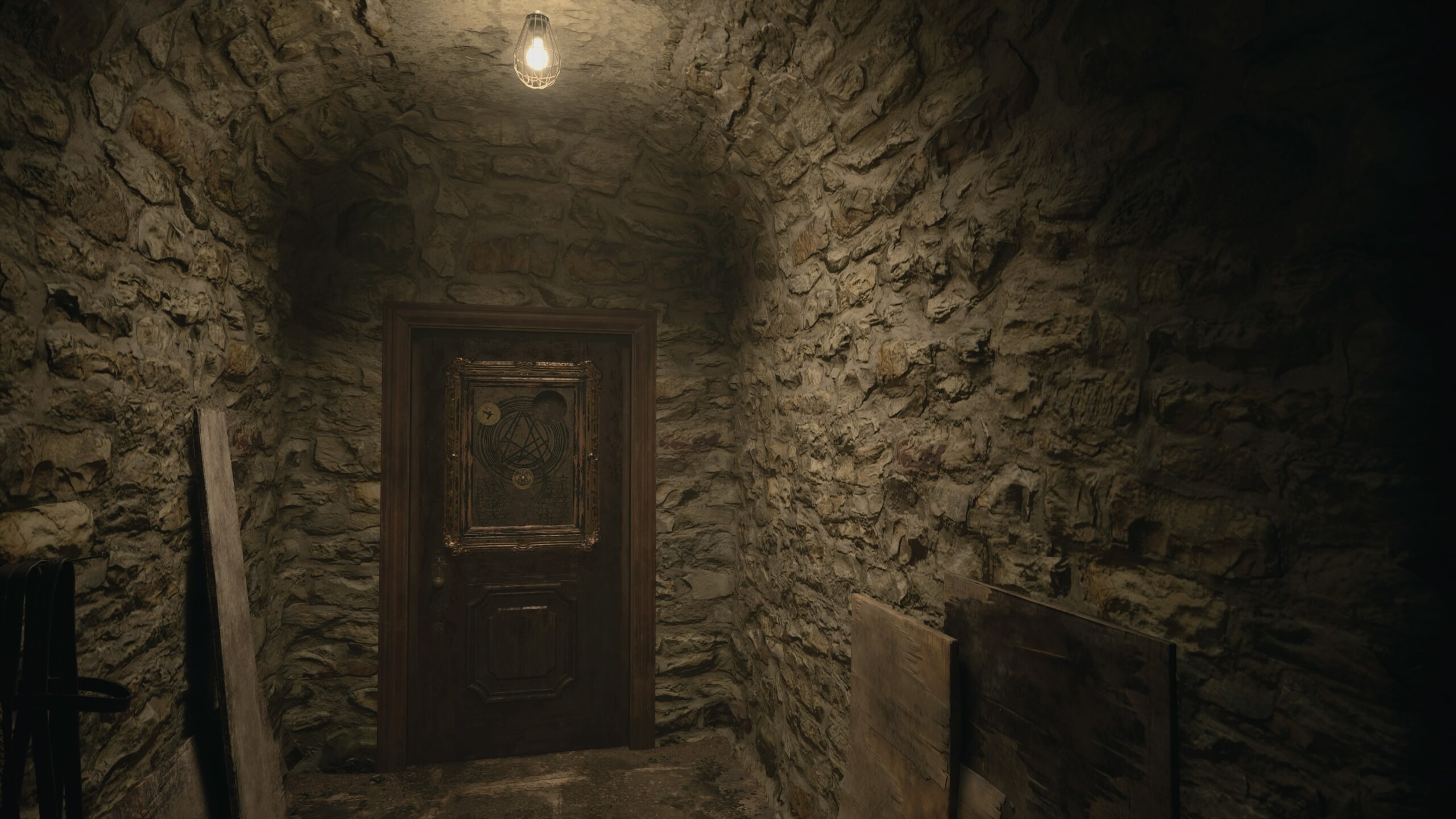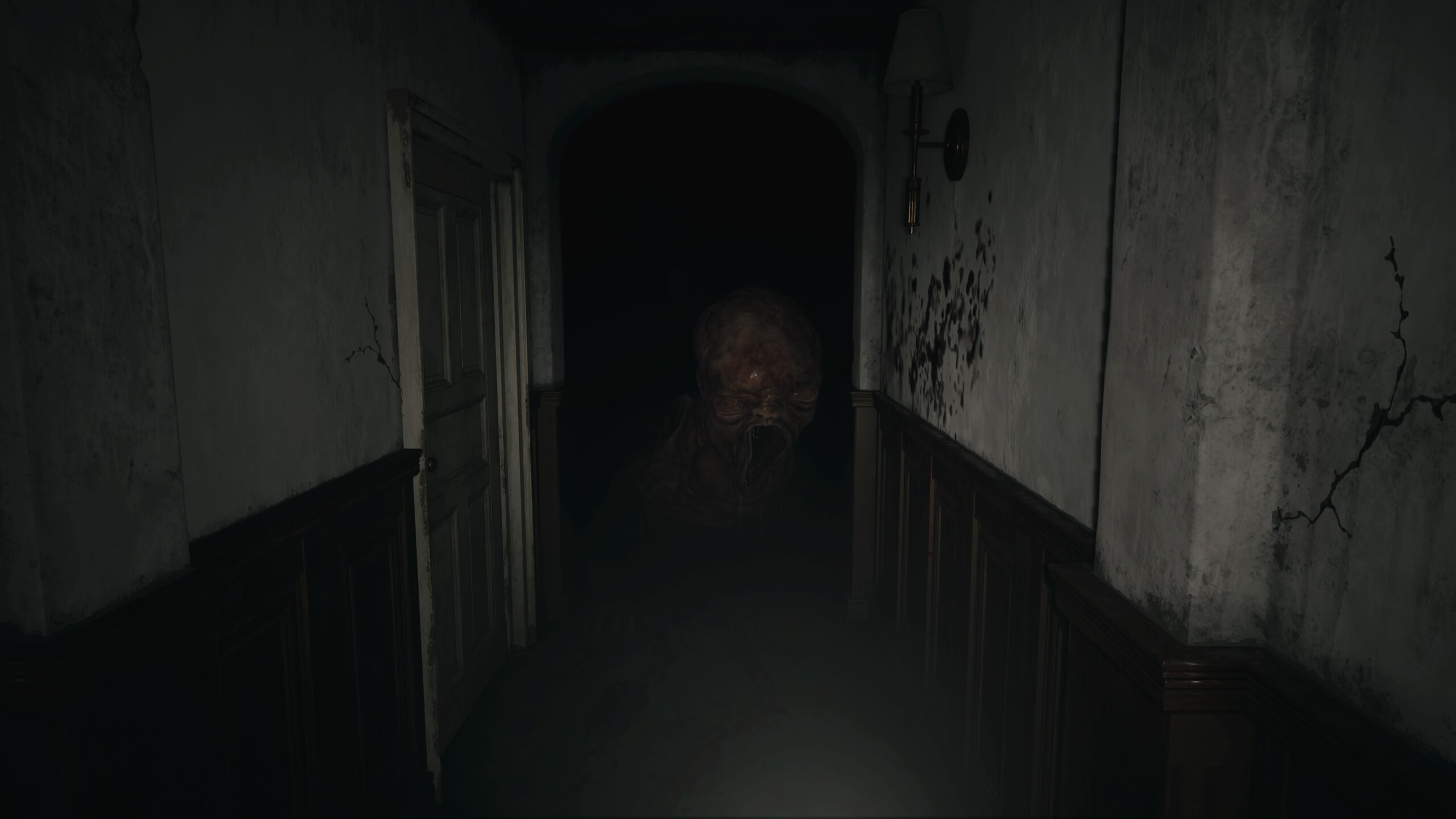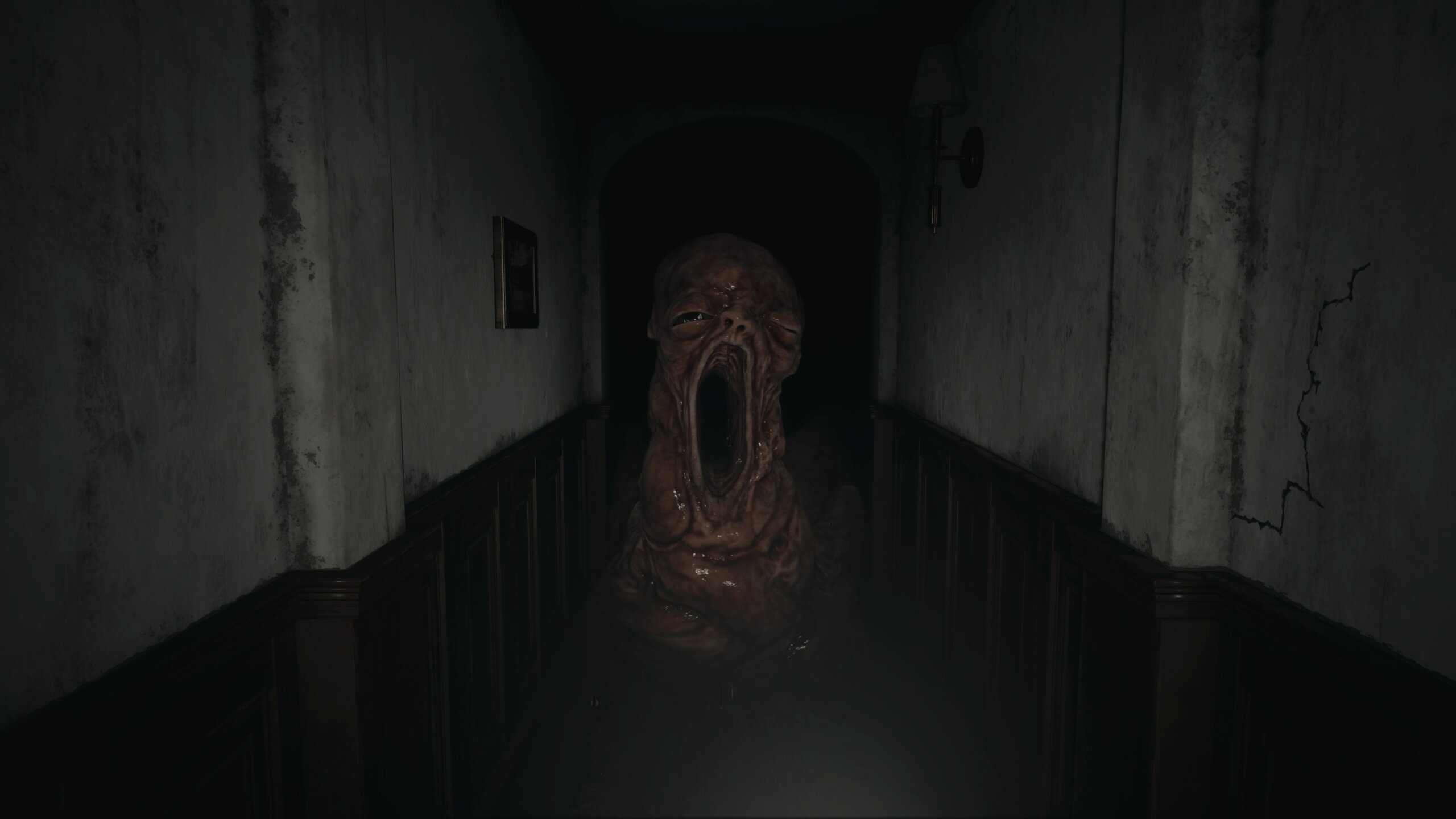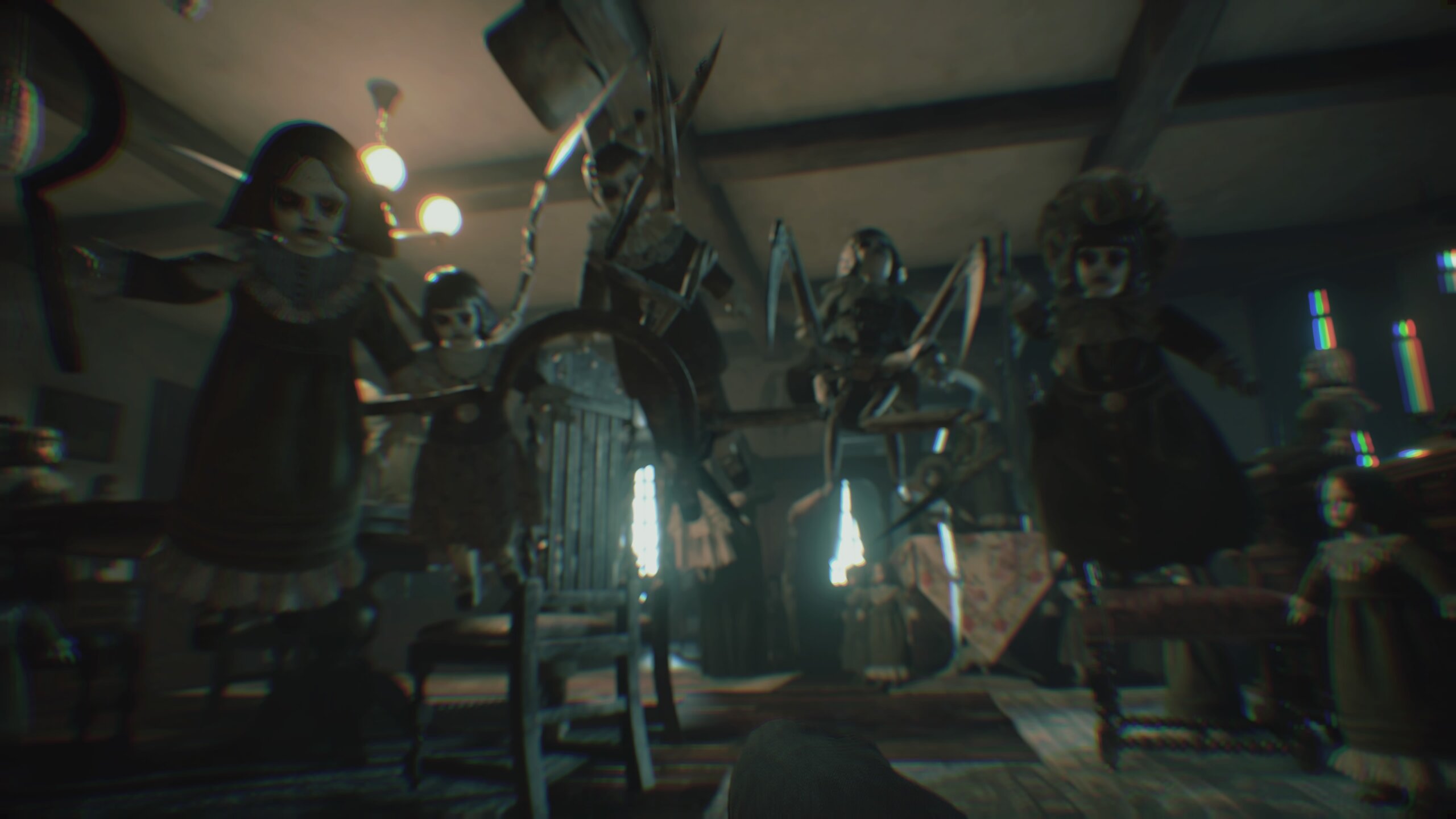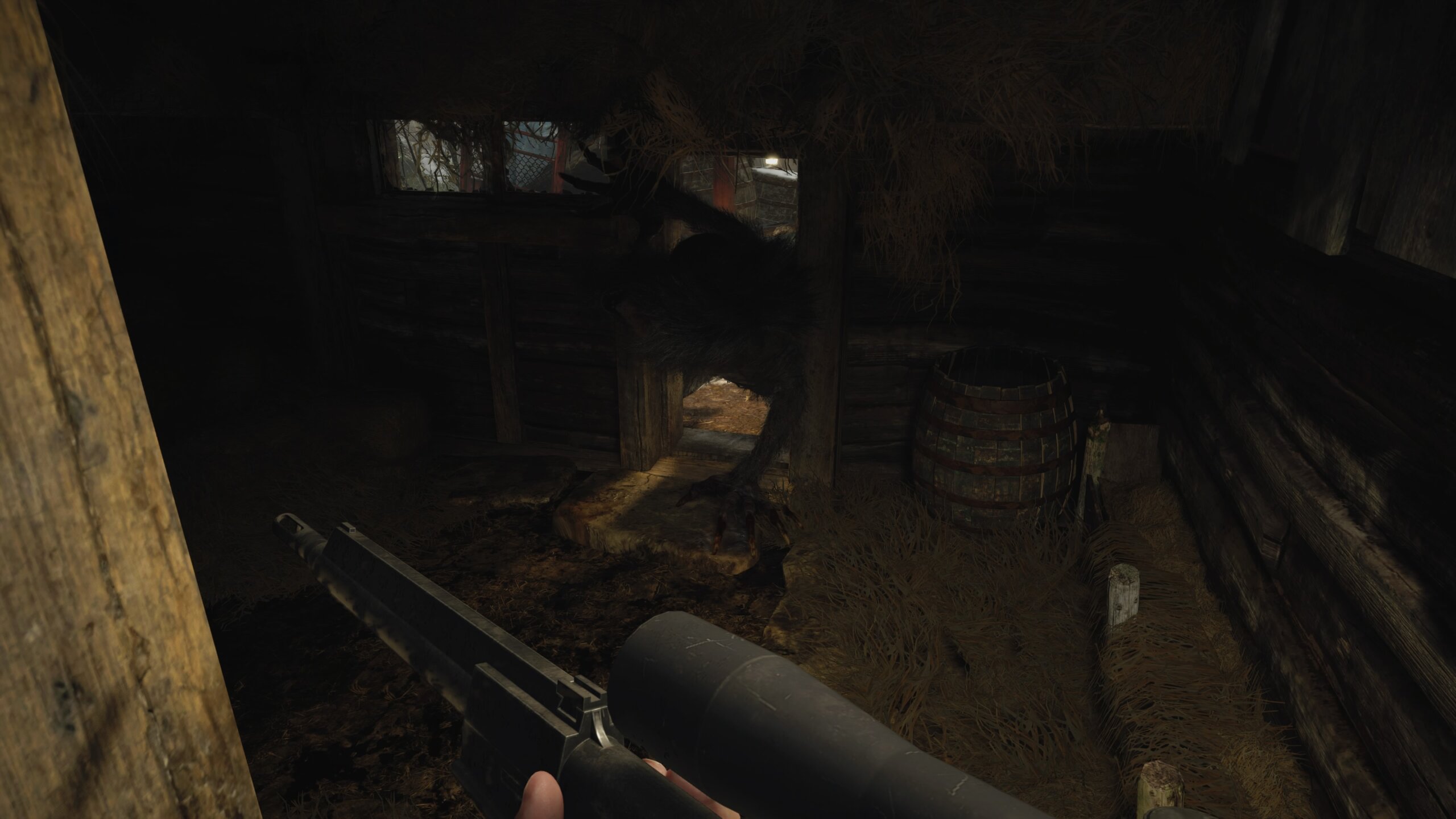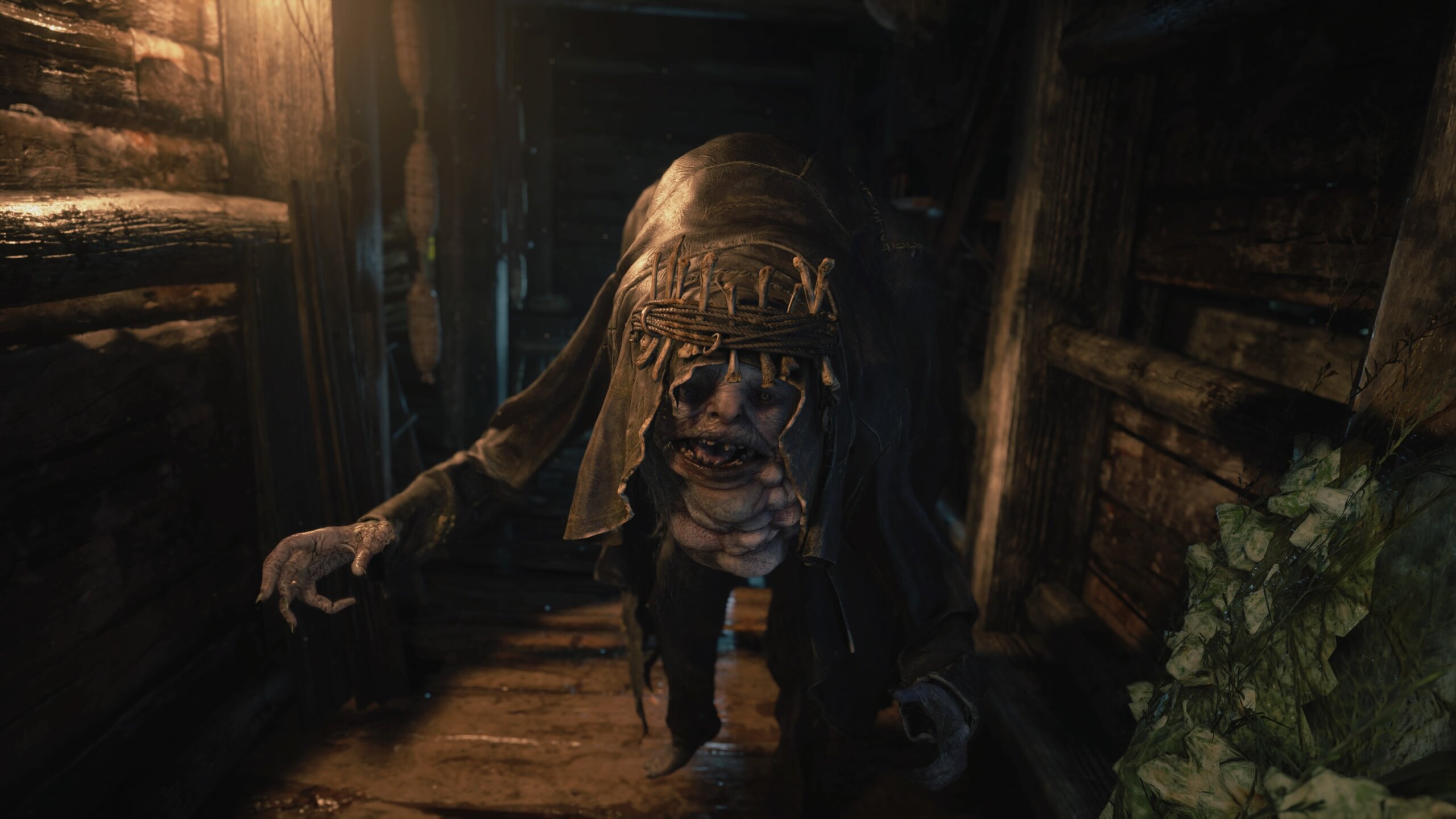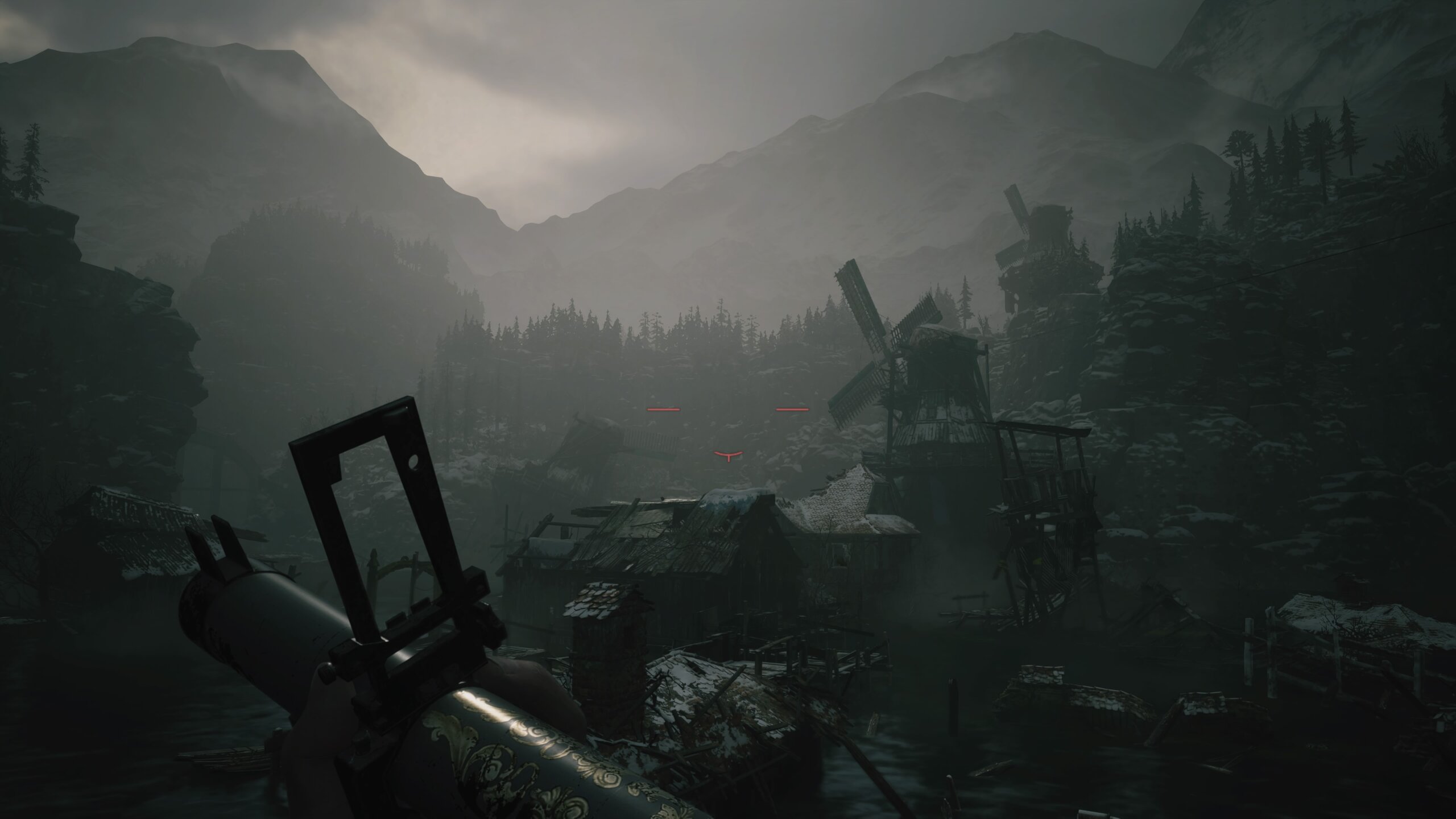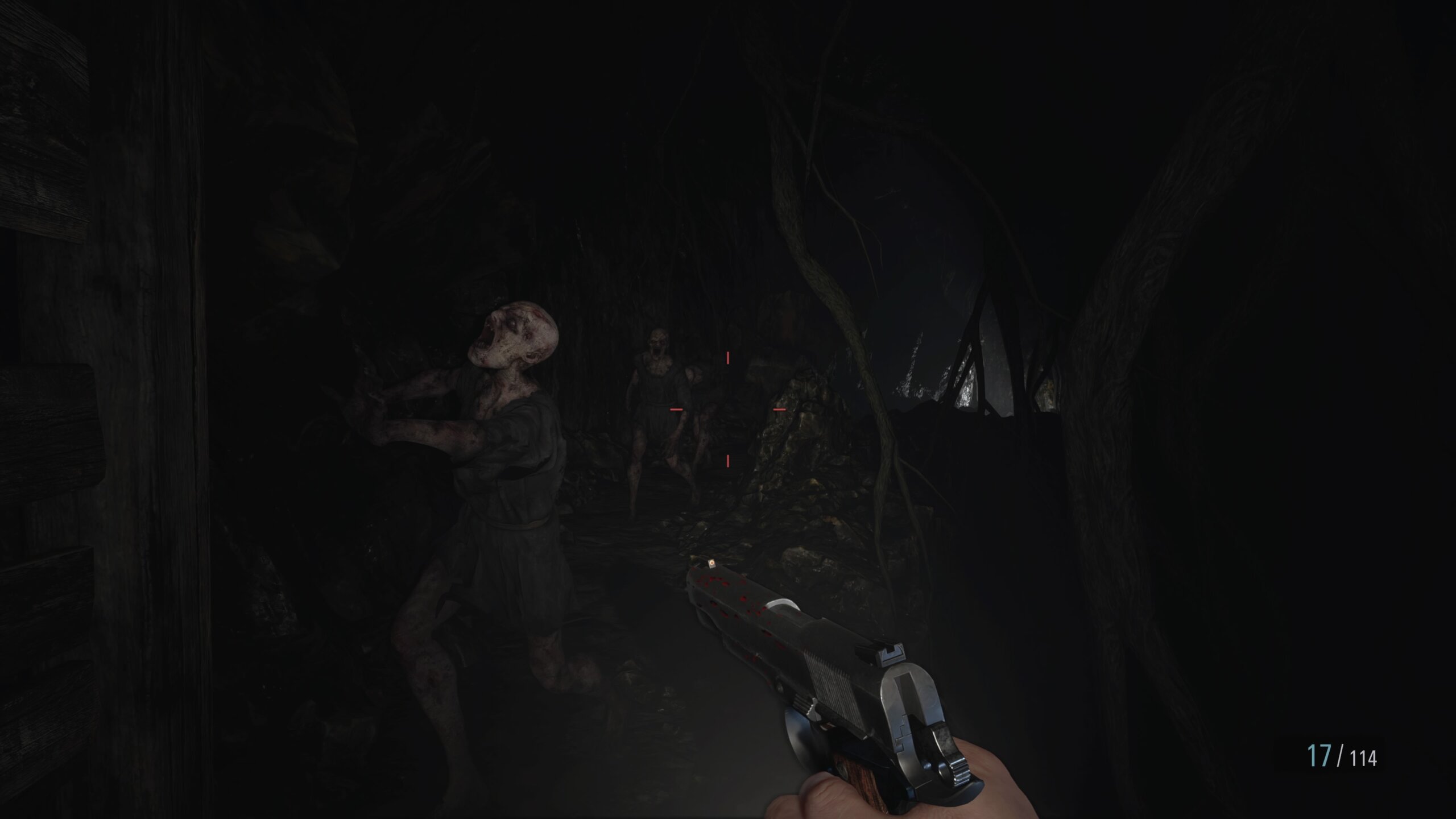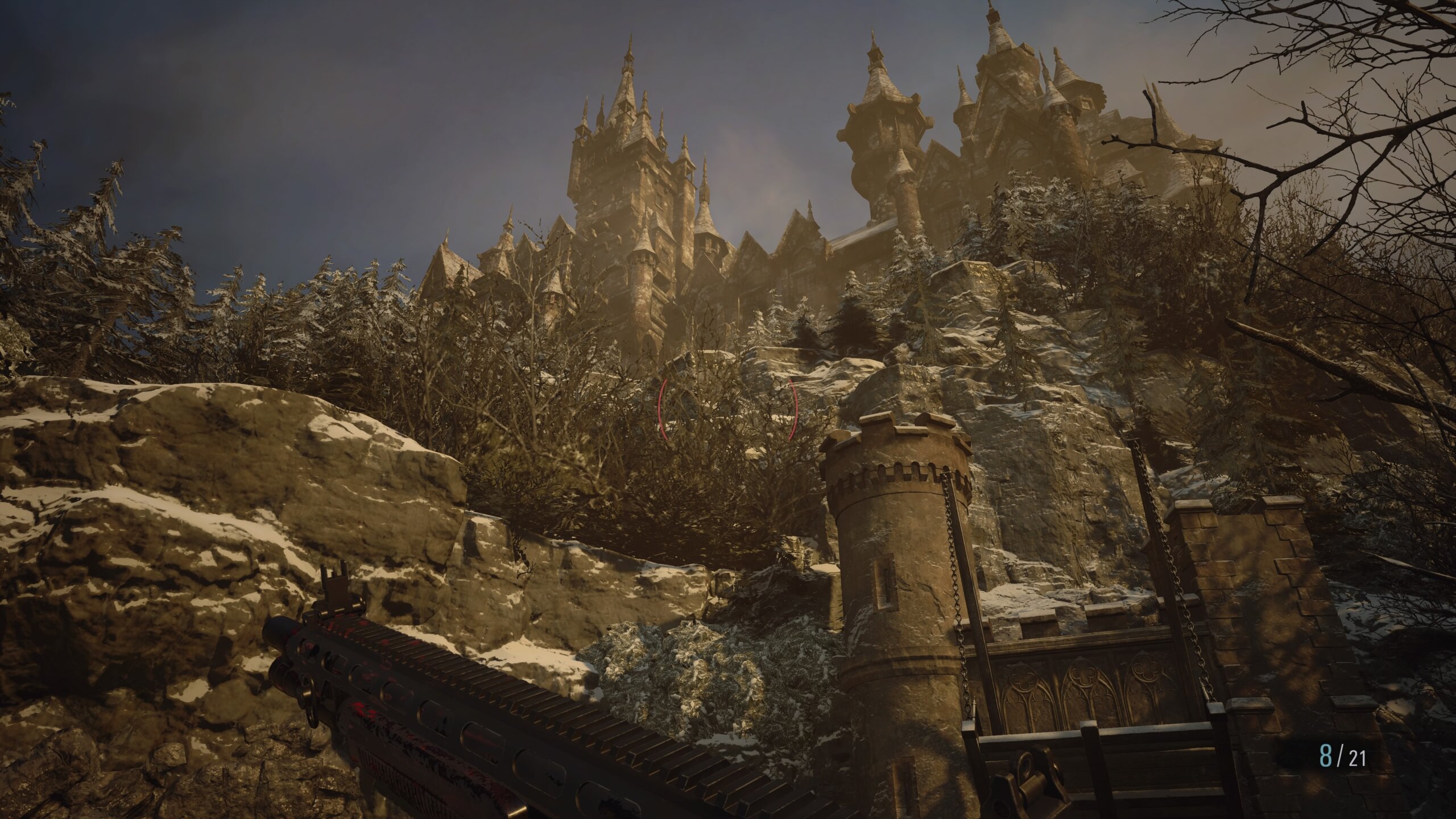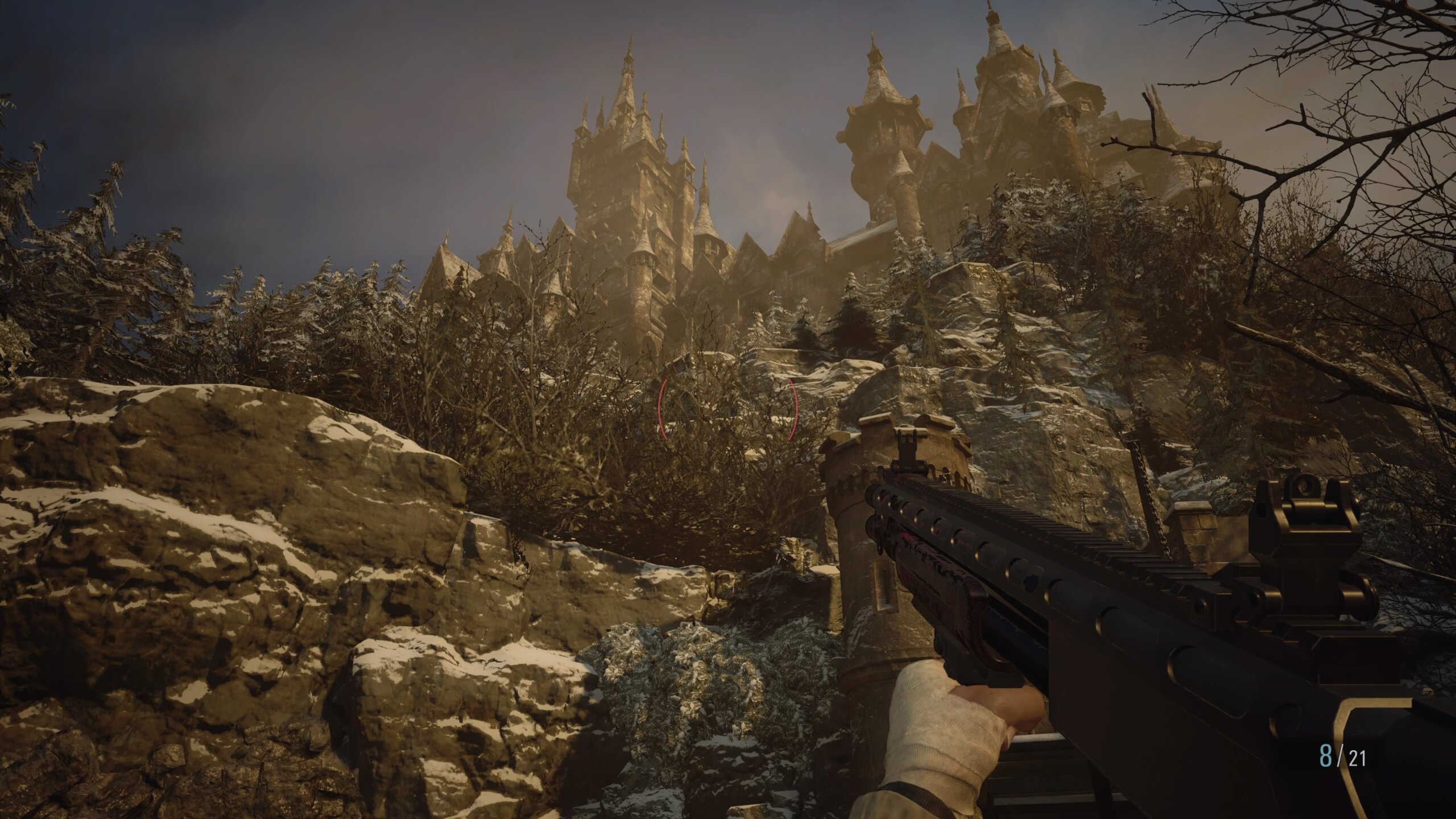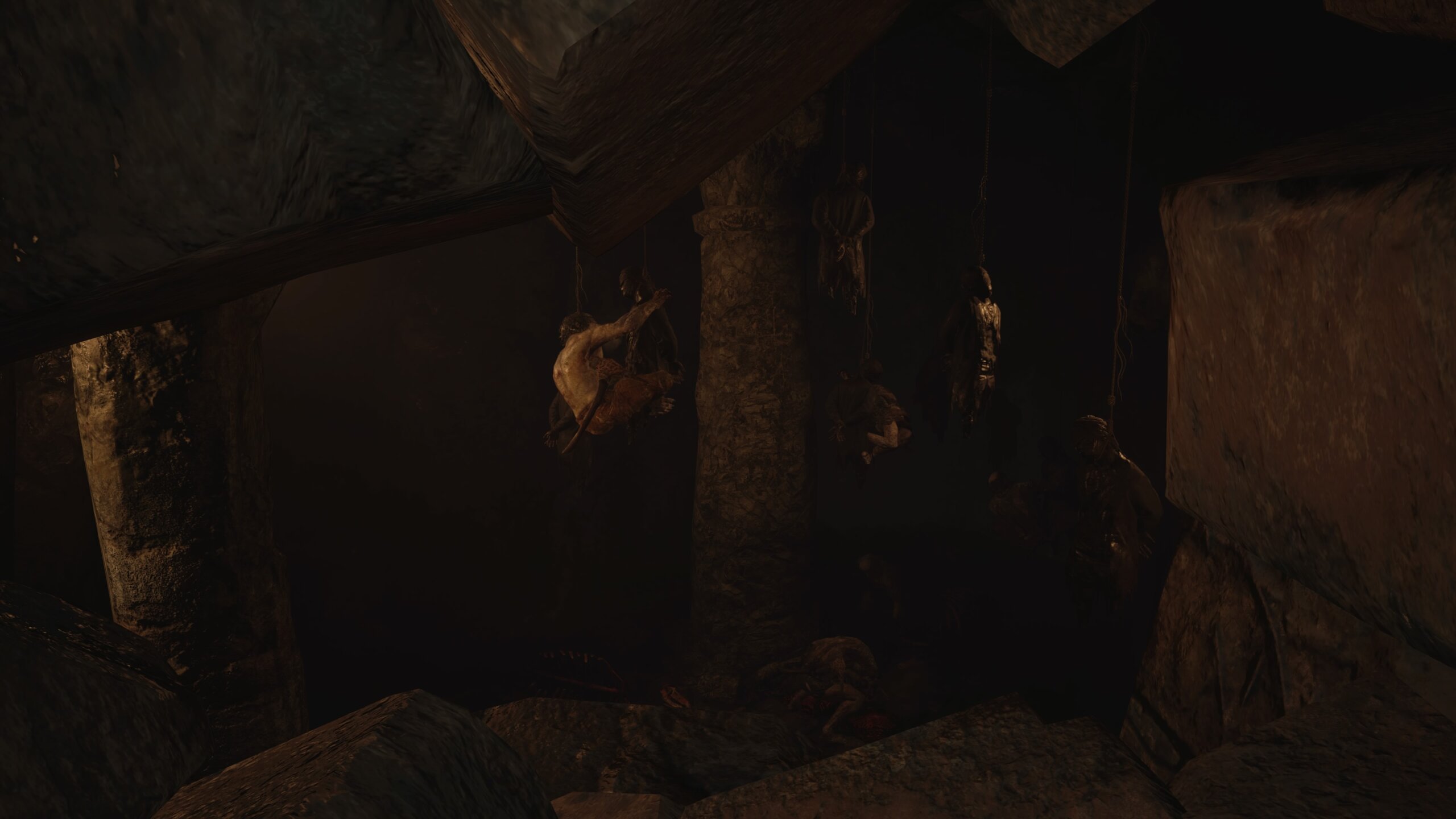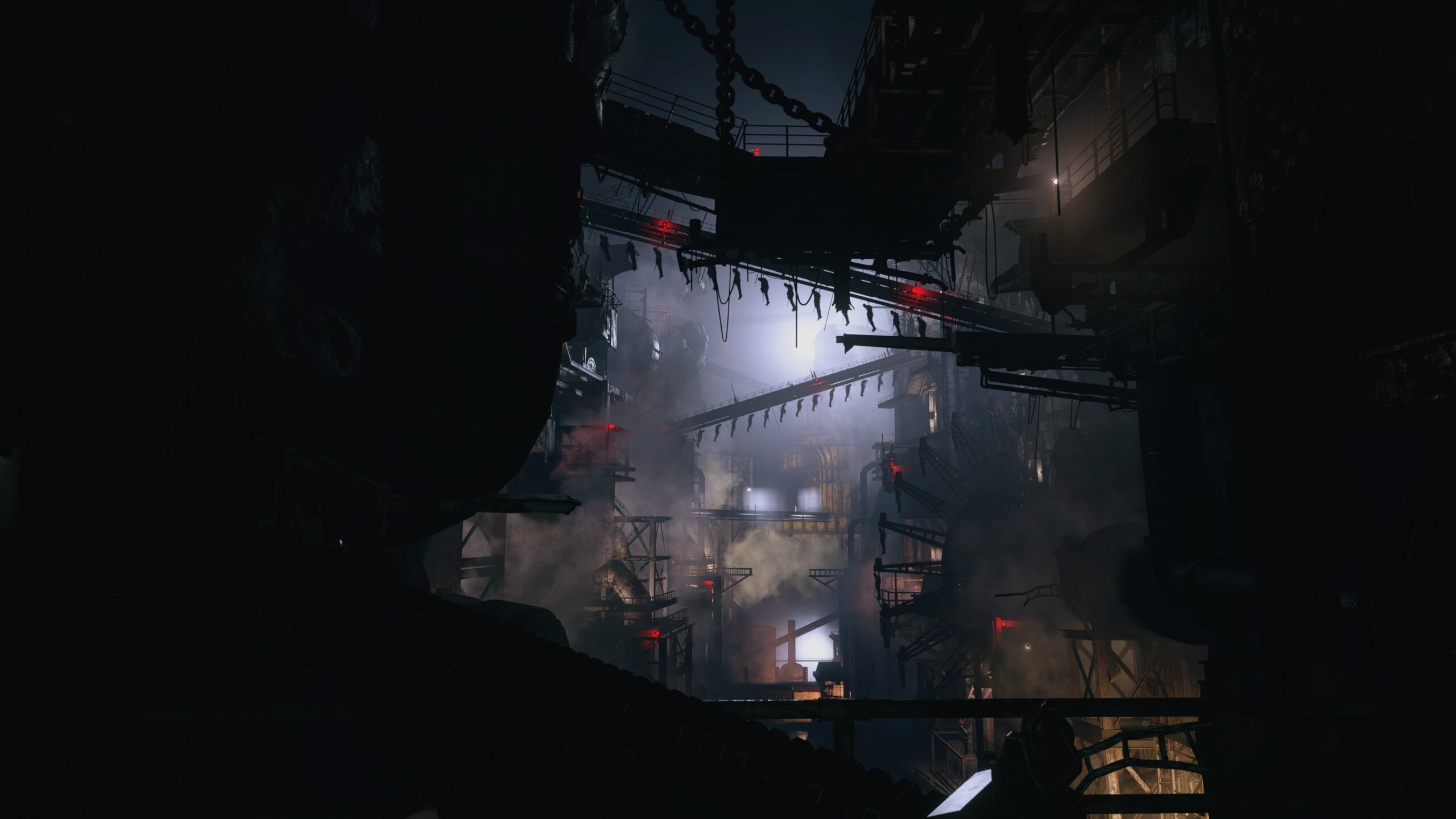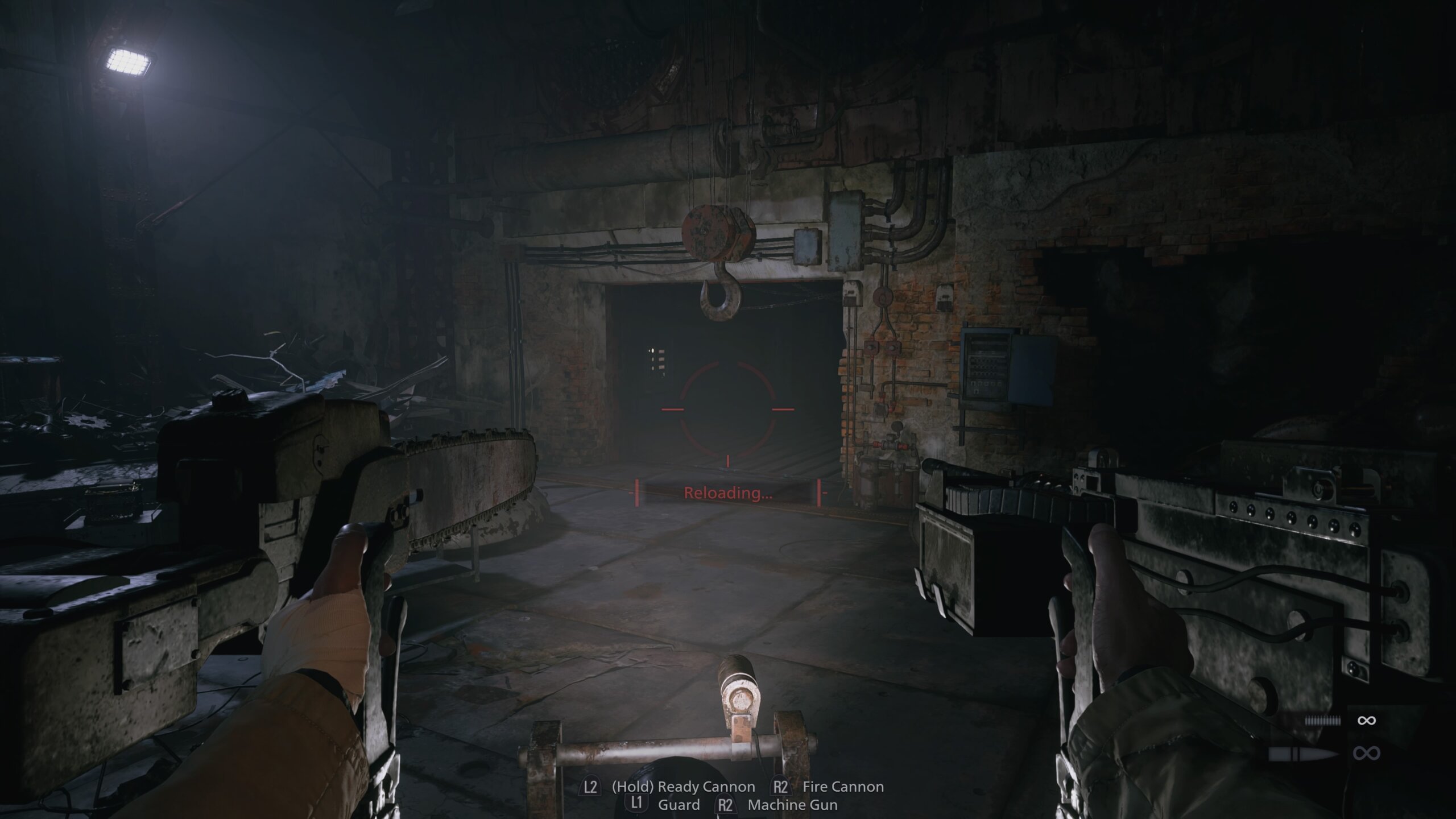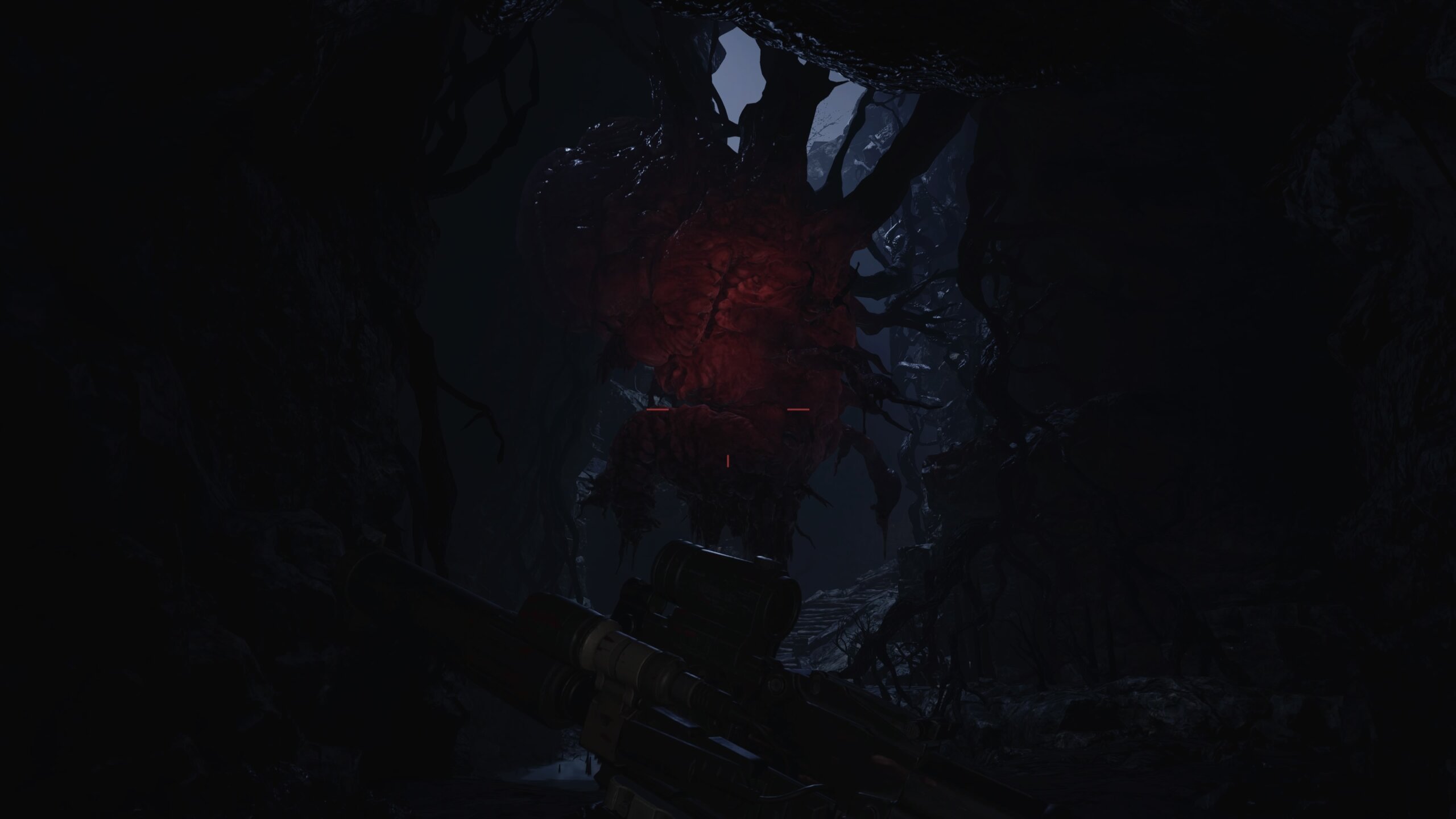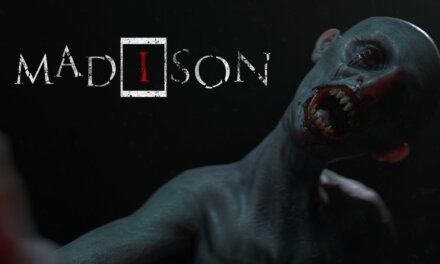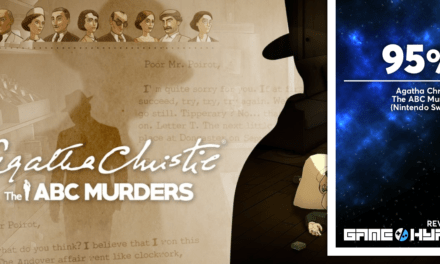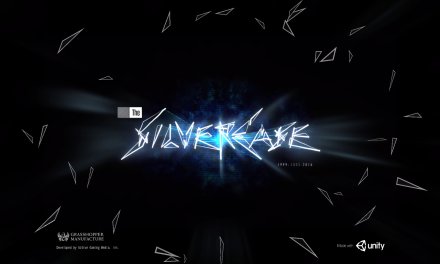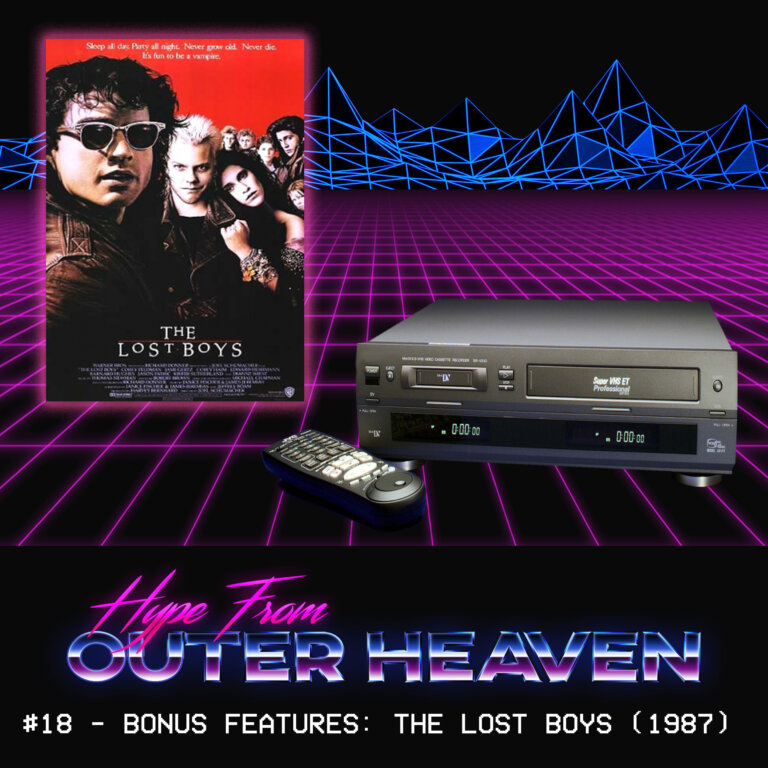“Danse Macabre.”
After riding the hype train for a solid year after it’s unveiling in June 2020, Resident Evil Village is finally here, being the 8th mainline instalment in the legendary Resident Evil franchise, which recently passed it’s 25th Anniversary as of March this year. Taking place three years after the events of Resident Evil 7: Biohazard, Ethan and Mia Winters have settled down with their daughter Rose in mainland Europe, with their perfect suburban life brought to a bloody end at the hands of former S.T.A.R.S officer: Chris Redfield, who thrusts Ethan into a new nightmare in a mysterious snowy village in search of his missing daughter. Resident Evil Village released for all major platforms on May 7th 2021, and as per usual fashion I’ll be giving a rundown on the PlayStation 5 version of the game; detailing the good, deconstructing the bad, while ultimately discussing whether it’s worth your time and money at the £54.99 asking price (UK PSN Store).
Had you told me that the next instalment of the Resident Evil franchise was going to be set in a spooky, snow-laden village overshadowed by a giant castle that was home to vampires and werewolves I would have passed it off as an exceedingly bad April fools’ joke. The blowout critical reception of Resident Evil 7: Biohazard was a return to form for developer: Capcom, returning the franchise to its survival horror roots and away from the action-shooter direction that was established in Resident Evil 4, with following successes in the forms of remakes for Resident Evil 2 and Resident Evil 3: Nemesis (check out my reviews for both games here and here respectively). Capcom went back to the drawing board with RE7, taking inspiration from, and firmly rooting the game in the horror genre, with the likes of The Texas Chainsaw Massacre (1974) and Evil Dead II (1987) acting as some of the primary influences for the game’s atmosphere and setting. Capcom have decided to continue this theme with the latest instalment: Resident Evil Village (stylised in roman numerals as VIIIage for the 8th main game in the franchise) seemingly taking inspiration from classic hammer horror movies such as Dracula (1958) and The Curse of the Werewolf (1961) as well as Roman Polanski’s hilarious romp: Dance of the Vampires (1967) for the setting and antagonists of the game, opting for what seems like a more supernatural setting this time around.
Resident Evil Village takes place three years after the events of Resident Evil 7: Biohazard and sees everyman: Ethan Winters living a quaint idyllic life in mainland Europe with his wife Mia and daughter Rose, on the BSAA and Blue Umbrella’s dime (the new, PMC face of the Umbrella Corporation, making amends for the atrocities they caused in Racoon City). While everything seems peaceful in the Winter household, it comes to an abrupt and bloody halt at the hands of BSAA operative (and all-around boulder annihilator) Chris Redfield who guns down Mia Winters in cold blood, subsequently taking both Rose and Ethan captive without cause or explanation. Ethan soon awakens in the middle of a snowy forest, with the transport van overturned and bodies of Chris’ operatives ripped to shreds and littering the area. After shuffling through the oppressive darkness of the forest, Ethan finds himself in an impoverished Romanian village living in the shadow of a gigantic castle. Not long after his arrival at the village, it soon becomes apparent that something isn’t quite right as he is thrust into a life-or-death scenario defending himself from the town’s inhabitants (sound familiar?) going on to discover that the fate of his daughter is somehow tied to the dark forces at work, and that he will have to sacrifice everything in order to save her. The narrative within RE Village is quite possibly one of it’s strongest features, with Capcom opting to drop the tropes of the franchise in favour of a multi-layered story that not only explores its characters (Chris Redfield actually has a personality now) but offers a harrowing, yet emotional journey over the course of the 12-13 hours you’ll spend with the game.
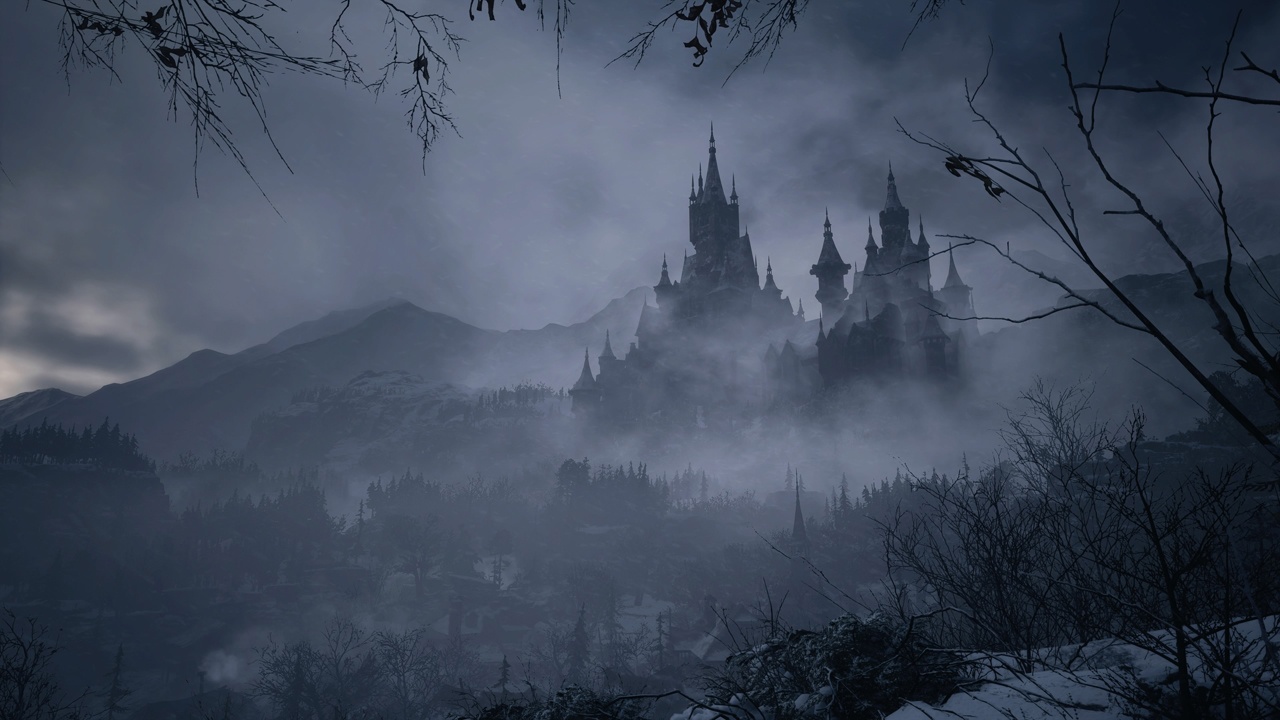
From the get go it’s apparent that Resident Evil Village is the lovechild of Resident Evil 7: Biohazard and Resident Evil 4, featuring story threads and gameplay features that hit both the nostalgia high-notes of RE4, all the while retaining the atmosphere and mechanics from RE7. The game retains the first-person perspective from RE7, while offering a much wider range of environments in comparison to its predecessor. The village acts as the main central hub that you return to at numerous points throughout the game, with the Castle (alongside other locations) acting as hub areas exploring the different lords that govern the area, each of which offering different levels of atmosphere and gameplay mechanics, all working together as a mini open-world. The Castle is largely a tense game of cat and mouse as Lady Alcina Dimitrescu (Death by Snu Snu anyone?) and her three daughters stalk the gloomy (yet spacious) halls in search of Ethan. Even though Lady Dimitrescu is easy on the eyes and not overly scary in her appearance (other than the fact that she’s the bioweapon equivalent of the Eiffel tower) the unpredictability of her search patterns and aggressiveness once she corners you make her an effective means of getting the heart racing (not too dissimilar from Mr. X from the RE2make). As aforementioned, the game’s other locations all bring a different experience to the table, some more action-heavy, with others being downright terrifying, borrowing gameplay elements from the likes of Amnesia: The Dark Descent. The juxtaposition between action and horror in RE Village is probably the most well done of the franchise, to the point where even the sections when you’re surrounded by Lycans (one of the game’s rank and file enemy types) with plenty of ammo being a tense affair, as they bob and weave out of your aim and dash towards you to take a hearty chomp out of your shoulder. Other enemies such as the Moroaica (Dimitrescu’s victims who are shambling corpses with a hunger for human blood) that lurk in the claustrophobic bowels of Castle Dimitrescu offer a different kind of threat, creeping up from the cracks in the castle and swarming you when you least expect it, holding down a pretty oppressive atmosphere in the early stages of the game.
In regards to the game’s combat mechanics, things largely remain the same as they were in RE7, allowing you to block incoming attacks with L1 and with the usual R2 and L2 for aiming and firing weapons respectively, which feel all the more punchier thanks to the excellent adaptive triggers on the PS5’s Dualsense controller, working perfectly in tandem with its dynamic vibrations, which raise the immersion tenfold. In addition to the refined feel of the game’s weapons, is the fact that there are far more of them this time around, with Village holding down some of the most unique looking and fun to play with guns in the franchise (the M1851 Wolfsbane is nothing short of awesome). Making it’s return from RE4 is the form of an in-game currency called Lei, which can be used at an in-game (and catastrophically obese) vendor called the Duke (who seems to be connected to a certain other salesman that fans of the franchise are acutely aware of) to upgrade weapons, buy items and sell treasures to as part of the in-game economy (which is once again similar in architecture to the one found in RE4). You can also feed the Duke by building up dishes with various ingredients that offer Ethan passive bonuses such as increased movement speed and a larger health pool, which offers another layer to the game’s already excellent use of backtracking (a Resident Evil staple at this point) and exploration. In addition to this, treasure crafting also makes a return, with certain treasure items being able to be combined together so they sell for a higher value. Crafting items and Key items have separate menus this time around, and while I can see how this could be more appealing as a gameplay mechanic for newer players to the franchise, it large and part takes out one of the core mechanics of survival horror in my personal opinion, leaving inventory management down to only your weapons, first aid kids and ammo (the attache case system also makes a return from RE4).
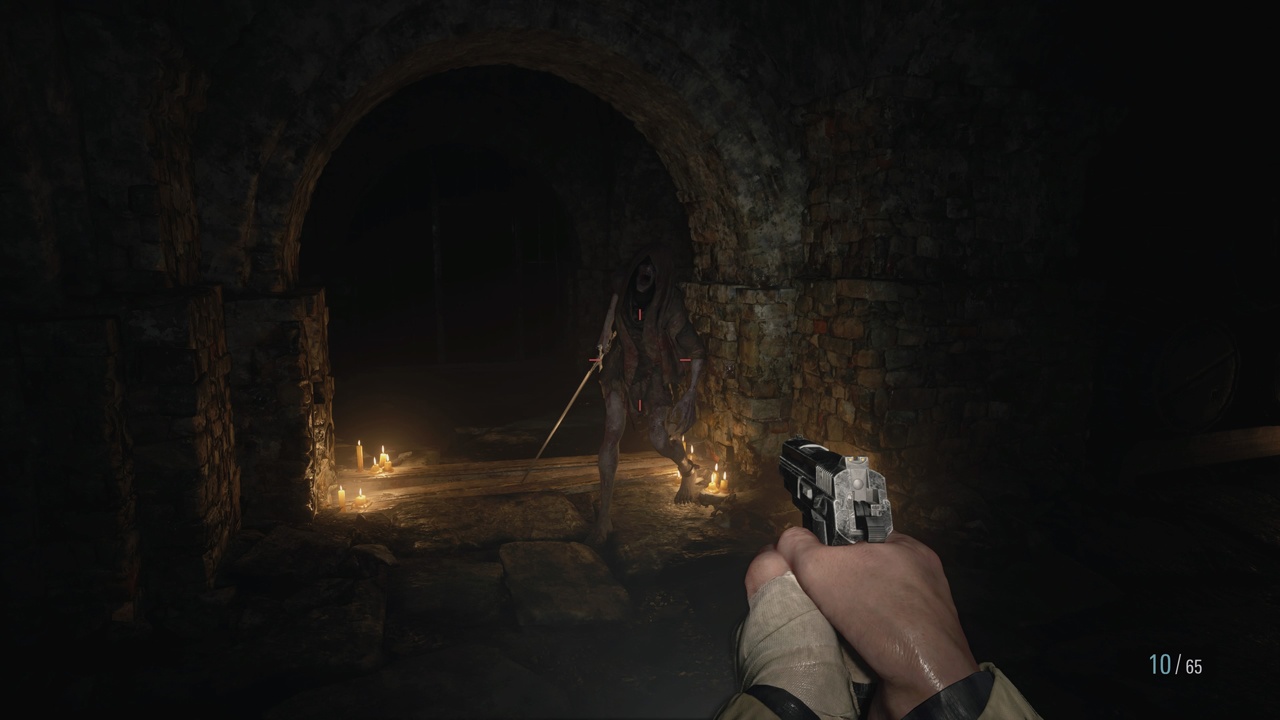
Despite Resident Evil Village being changed to a cross-generation title at the last minute, performance and visual fidelity on the new consoles were at the forefront of production for Capcom, with the game being downright stunning on PlayStation 5, truly making the RE Engine shine on ninth-generation systems. For starters, RE Village offers full 4K HDR (3840x2160p) on PS5 with a flawless 60fps frame rate, which dips down to 45fps if Ray Tracing is turned on. Character models, textures of in-game items and the game’s environments all look flawless, even down to the creases on Ethan’s hands thanks in part to the high polygon budget that Sony’s new system affords the RE engine. Performance (while not seen first-hand as this is a PS5 review) is also reported to be solid on launch PS4 models and PS4 Pro’s offering 1080p / 60fps and checkerboard rendered 4K at 3840x2160p respectively for the different models. Sony’s Dualsense controller also shines here, the controller’s excellent haptive feedback and adaptive triggers make weapons feel distinctly different from each-other, with the loose (yet static) feeling and control of an automatic M1911 pistol, to the clunky, heavy trigger pulls (and subsequent buckshot blast) from a Winchester Model 1897 Shotgun, all come to life in a way that feels truly next-gen in terms of immersion.
Despite coming in at 12-13 hours on your first run, Resident Evil Village offers a lot in terms of replayability thanks in no small part to the return of the fan-favourite mode: The Mercenaries, that sees Ethan fight against the game’s enemies across three distinct stages (with three sub-levels for each) to try and get the highest score possible (which includes some in-game goodies should you aim for the highest bracket possible). New Game + is a returning feature, which acts in the same way it did with Resident Evil 4, retaining funds, weapons & upgrades, ammo and treasures to your new playthrough, which can be tackled on further difficulty modes (Village of Shadows mode is not for the faint of heart) to earn Completion Points to spend in the end-game store, working similarly to how it did in the RE3make, offering unique weapons, unlimited ammo, concept art and other collectibles to work towards far beyond your initial playthrough. Overall, Resident Evil Village has only solidified that Capcom has learned from all of the lessons from the 25 years of the Resident Evil franchise (RE3make being the odd exception) offering one of the most dynamic and refreshing survival horror titles of the last decade that is dripping atmosphere (and mould) from every pore. The overall production quality, narrative direction and fusion of past experiences makes Resident Evil Village easily one of my favourite entries in the franchise, and one that I can wholeheartedly recommend to horror fans worldwide.
A PlayStation 5 review code was provided by Capcom Europe.

